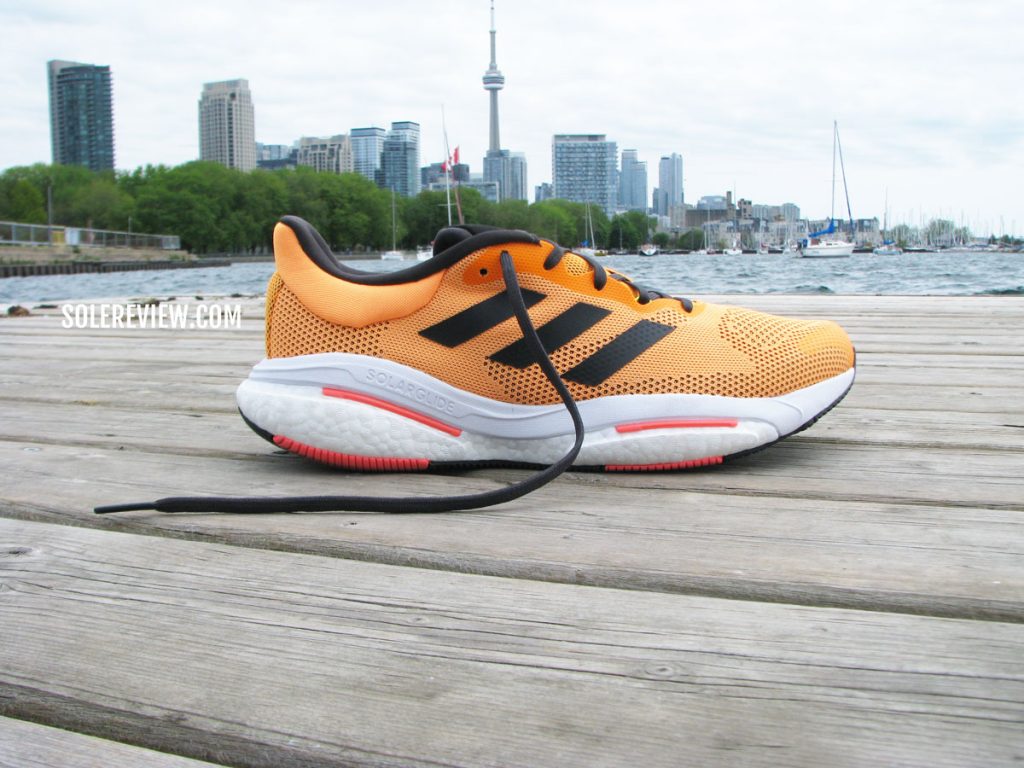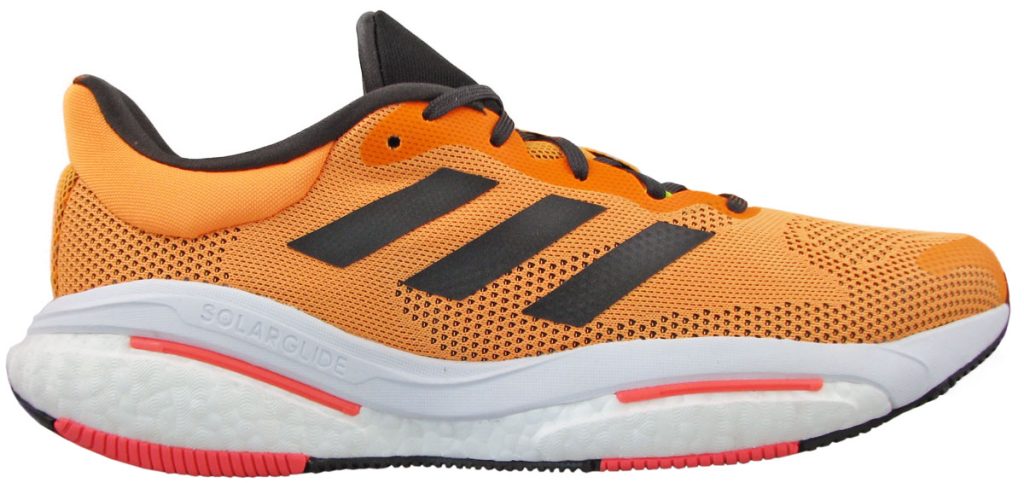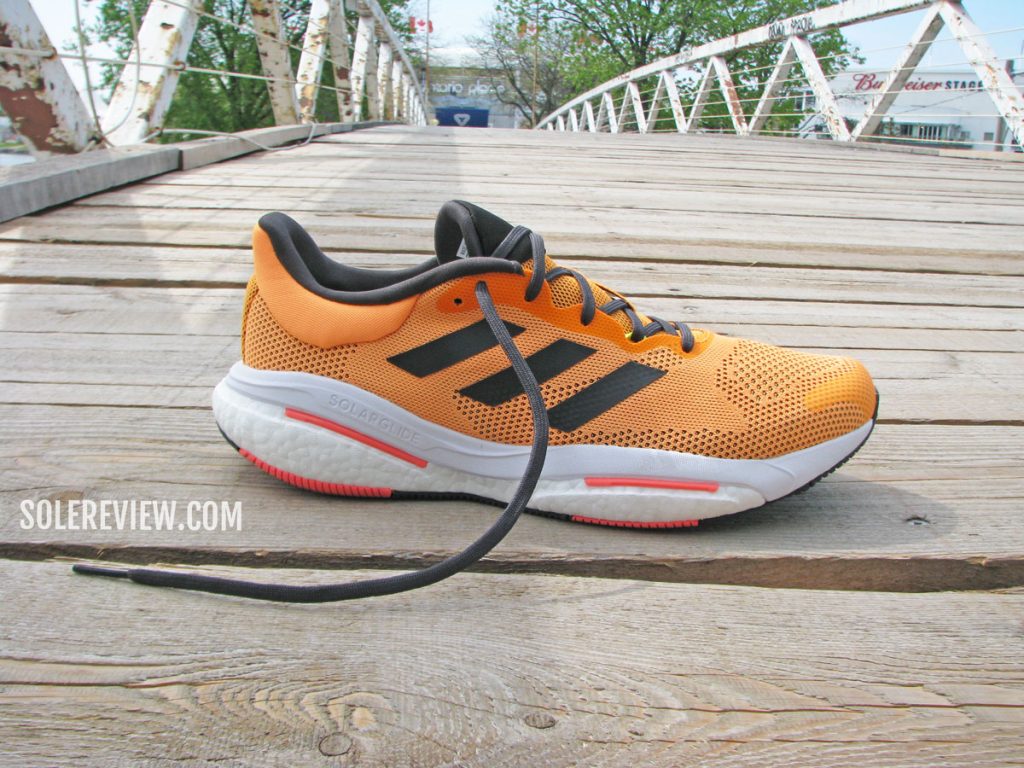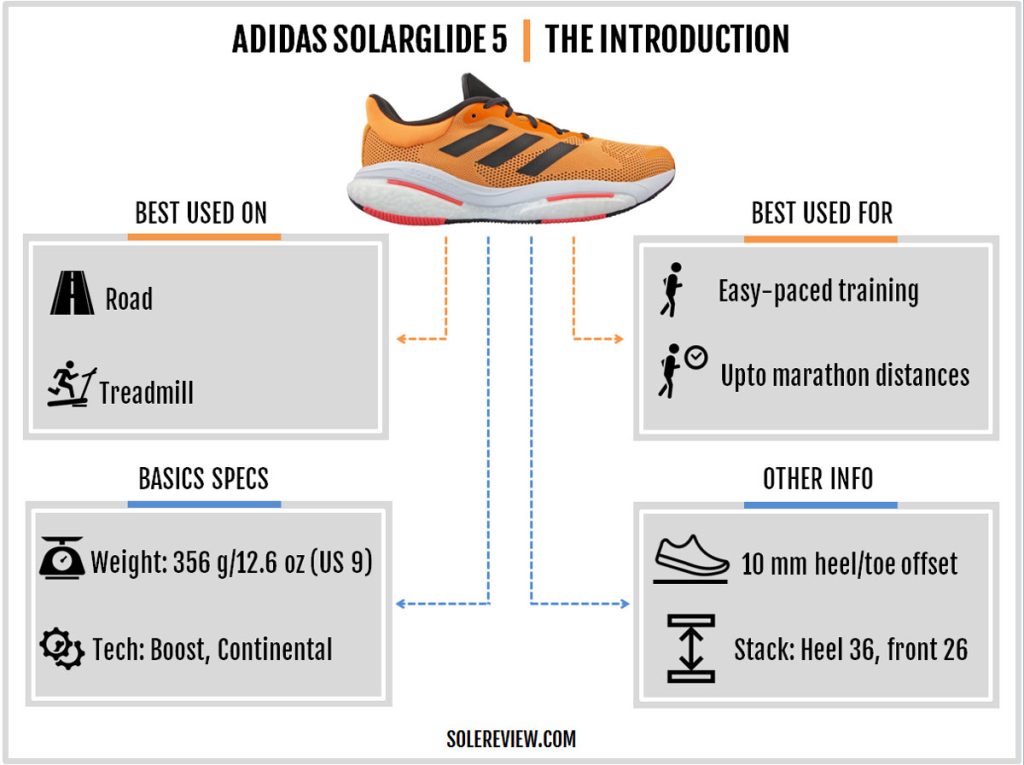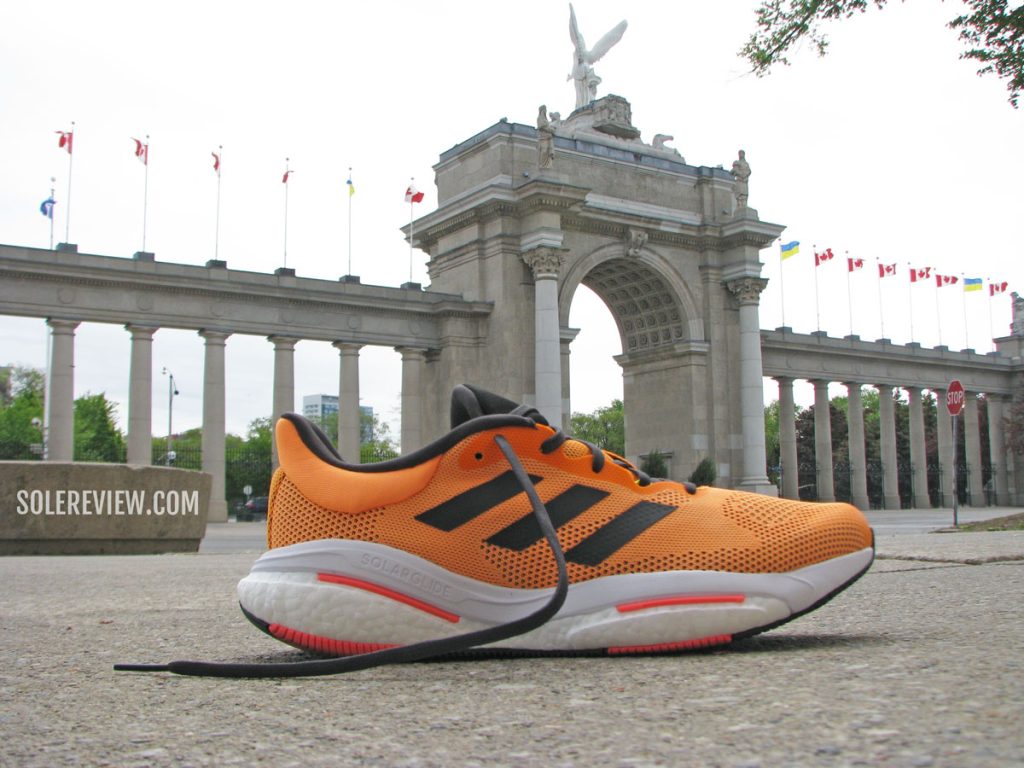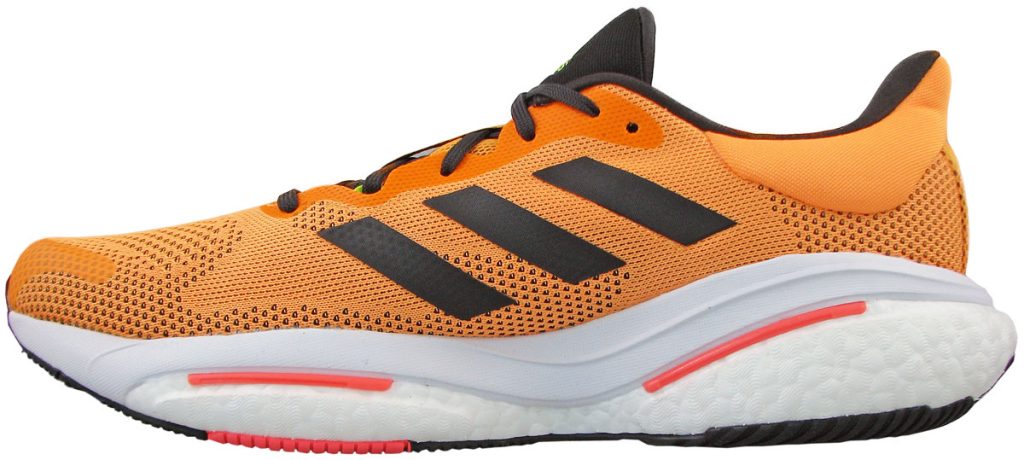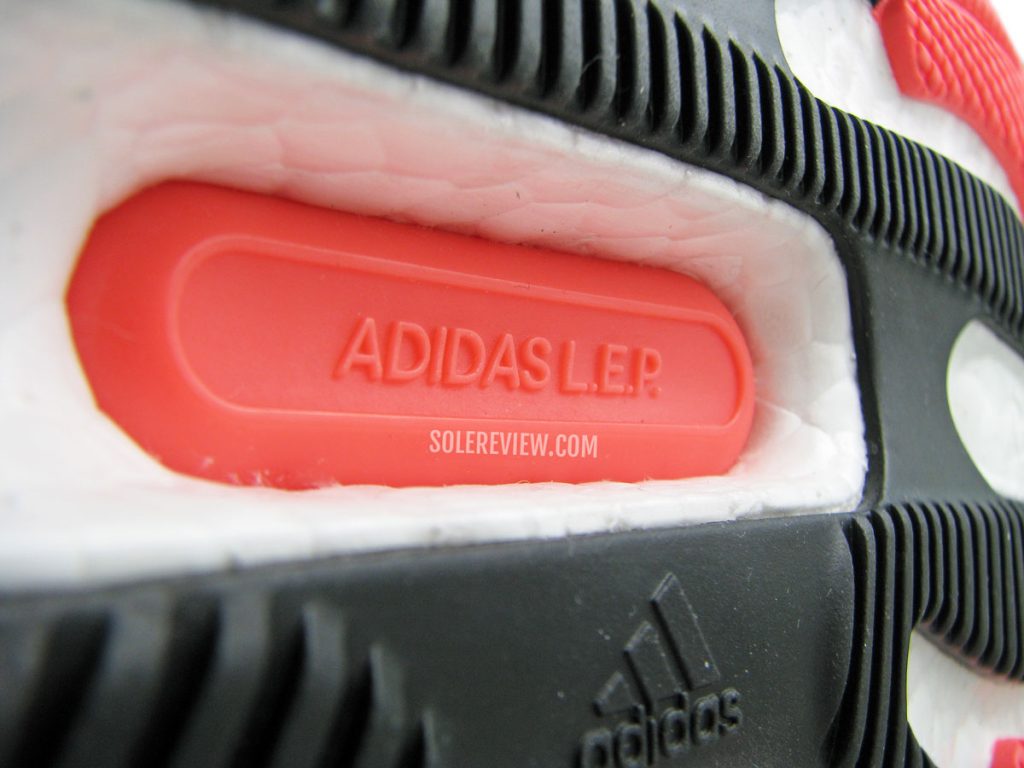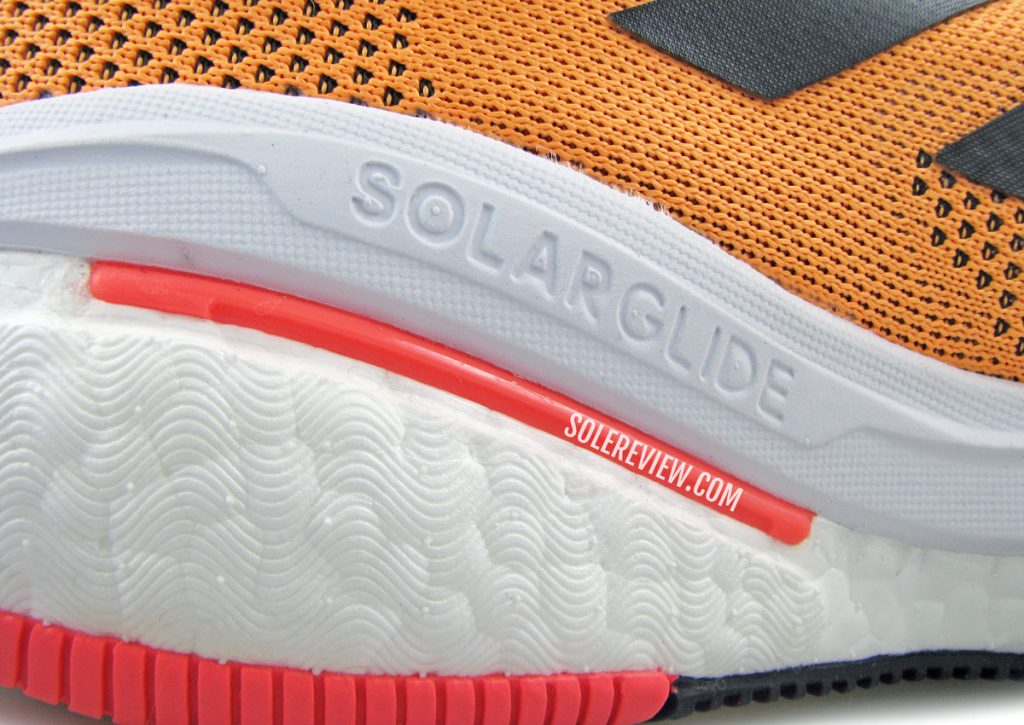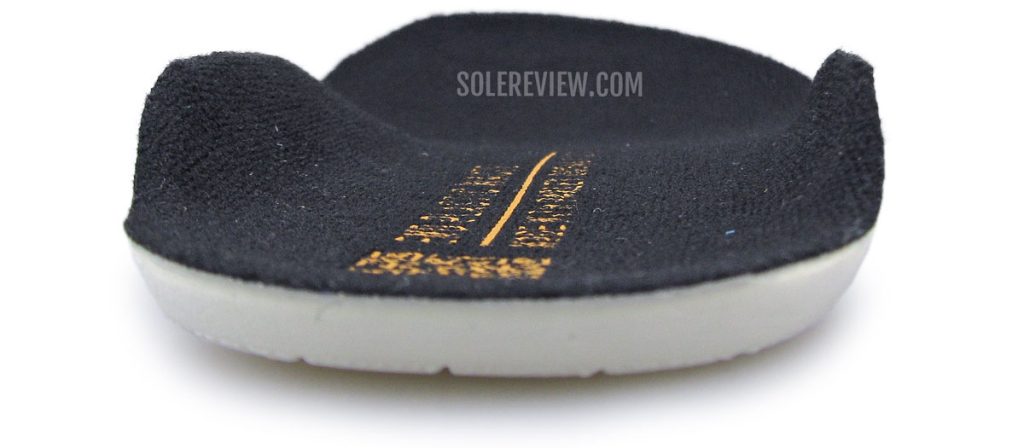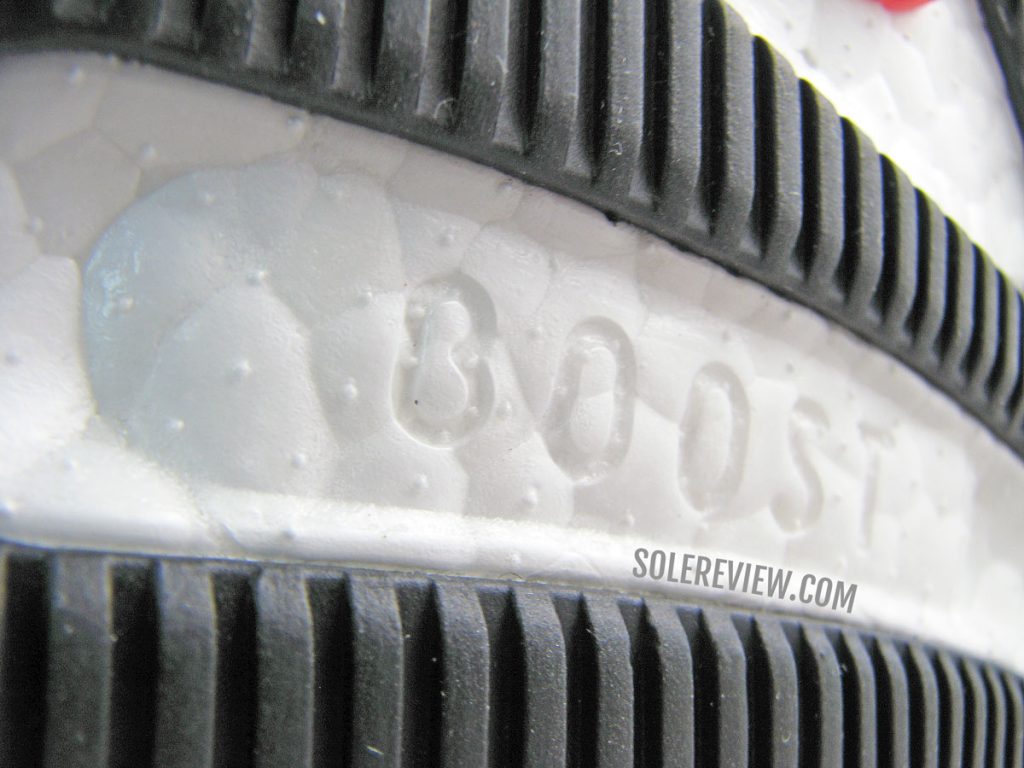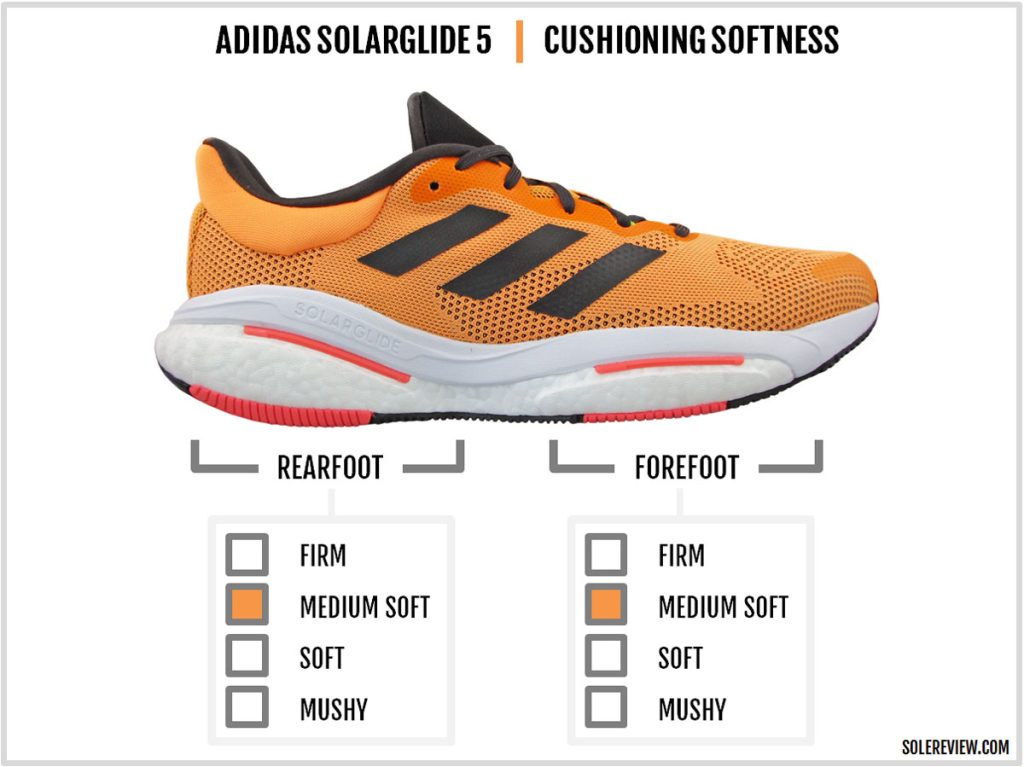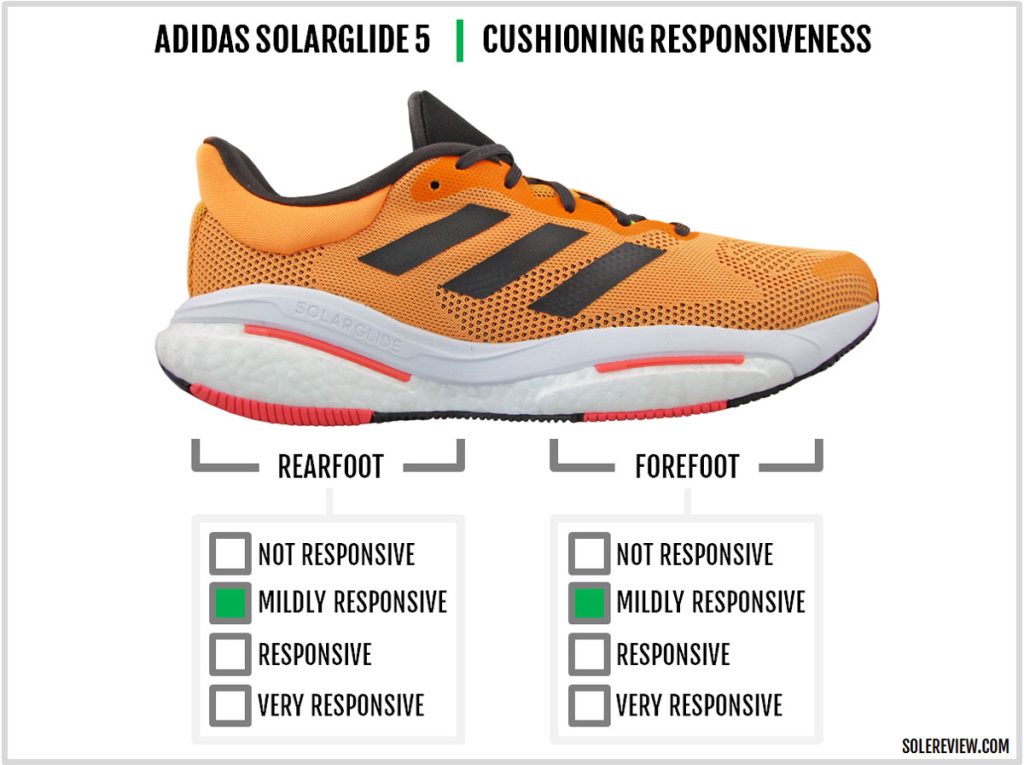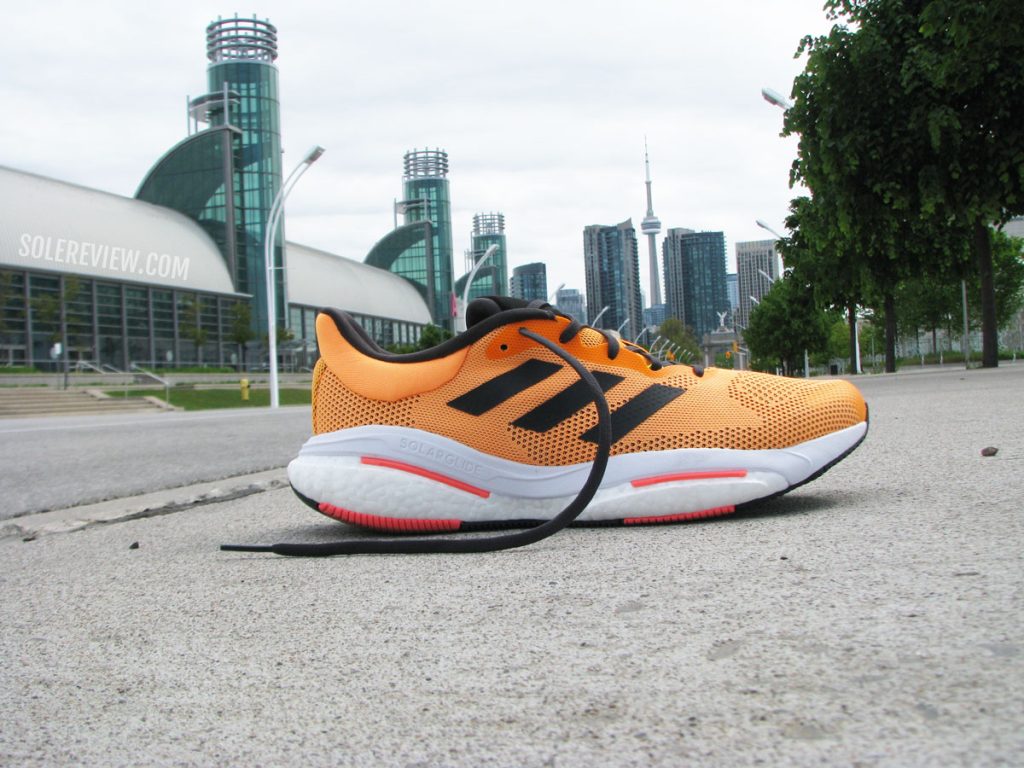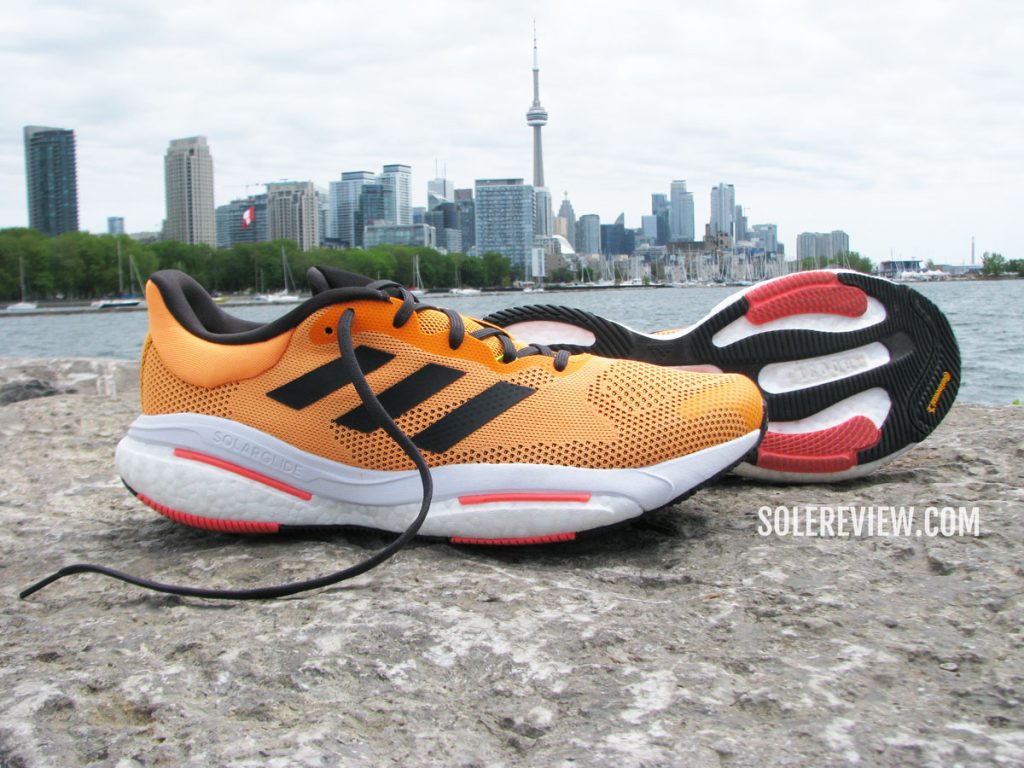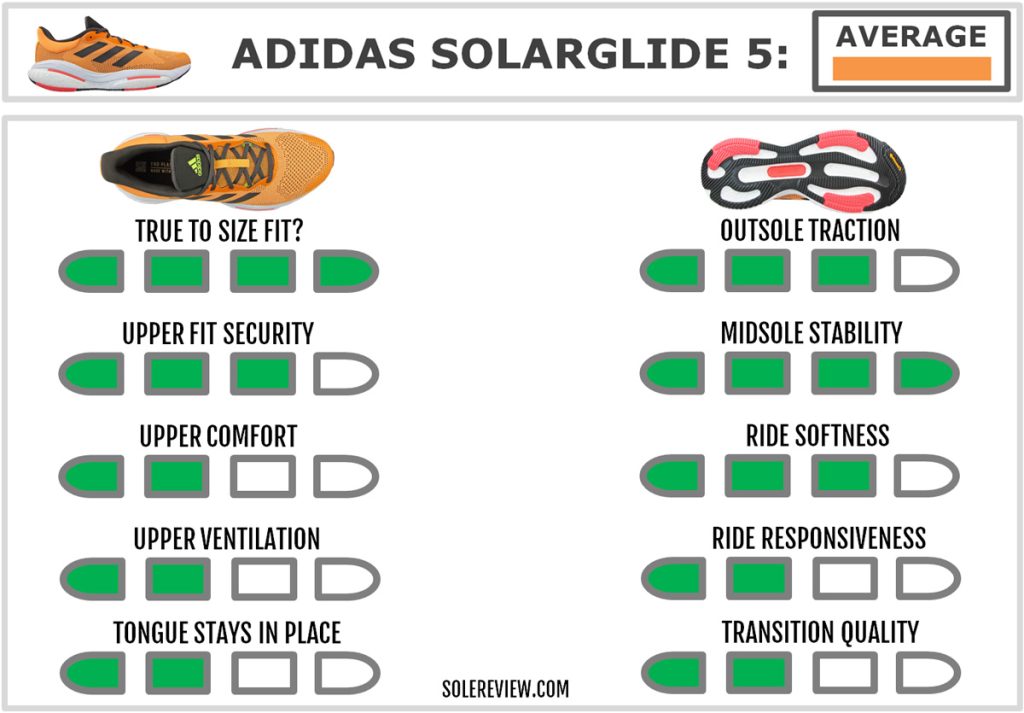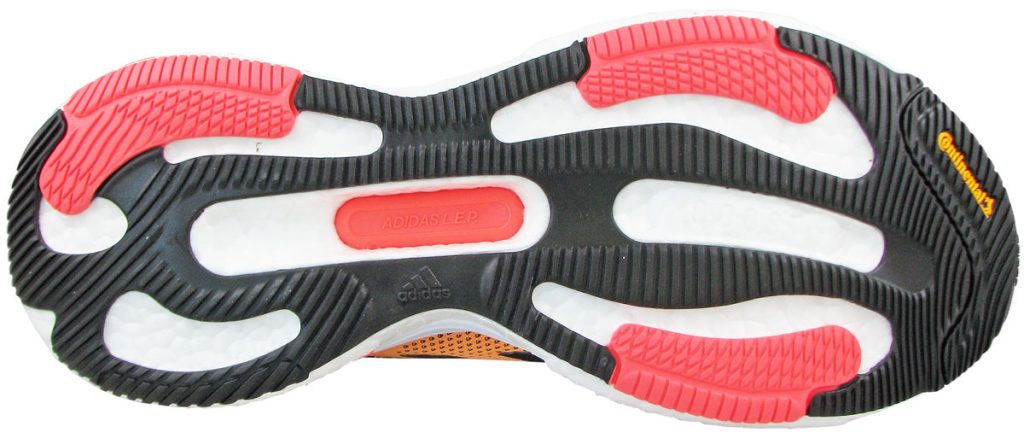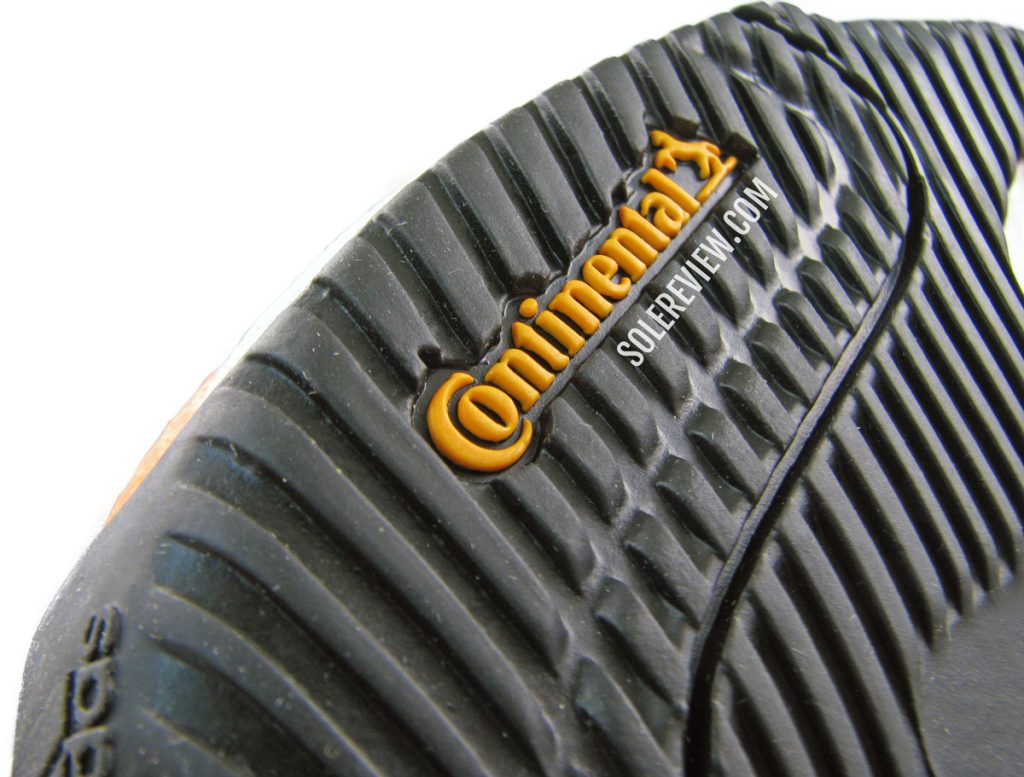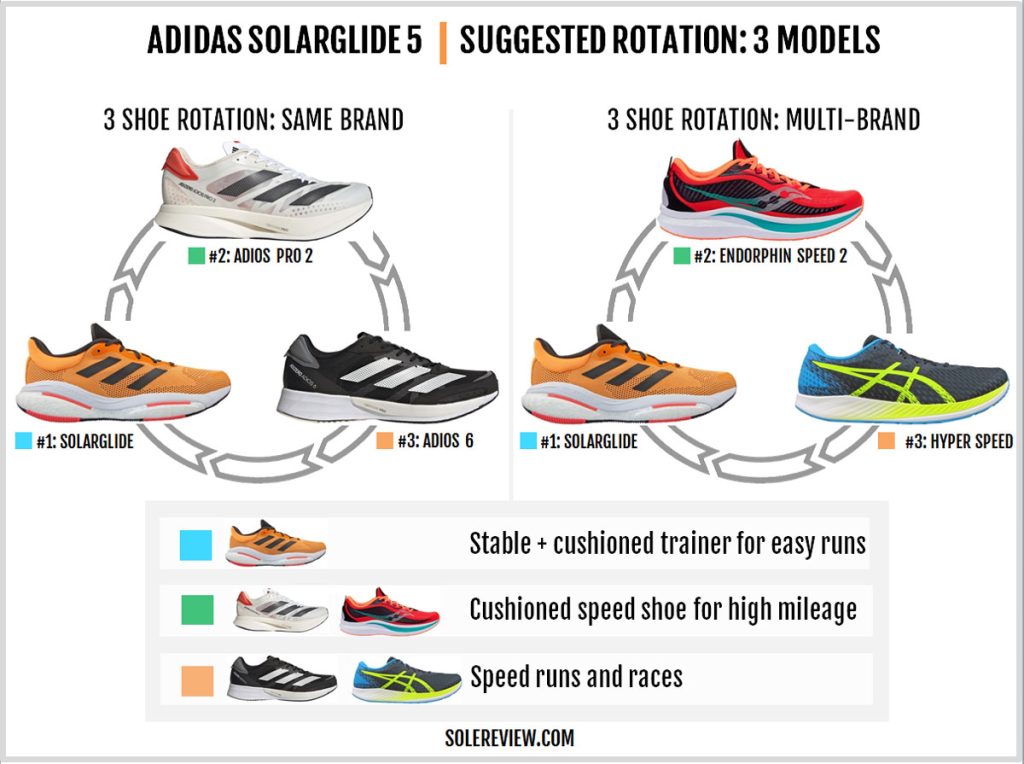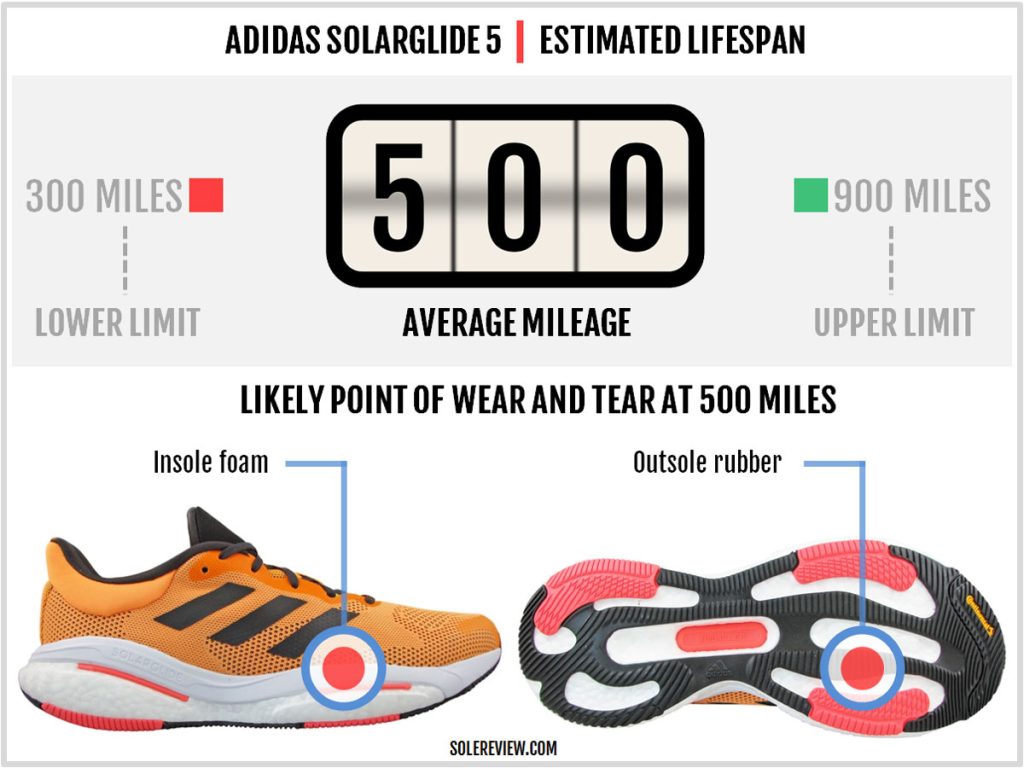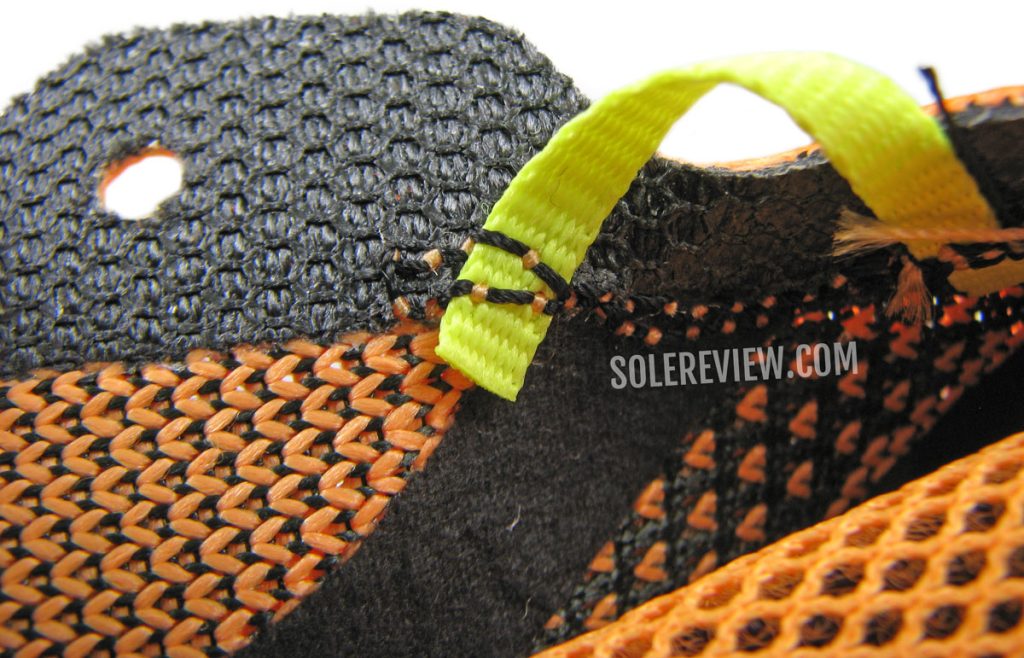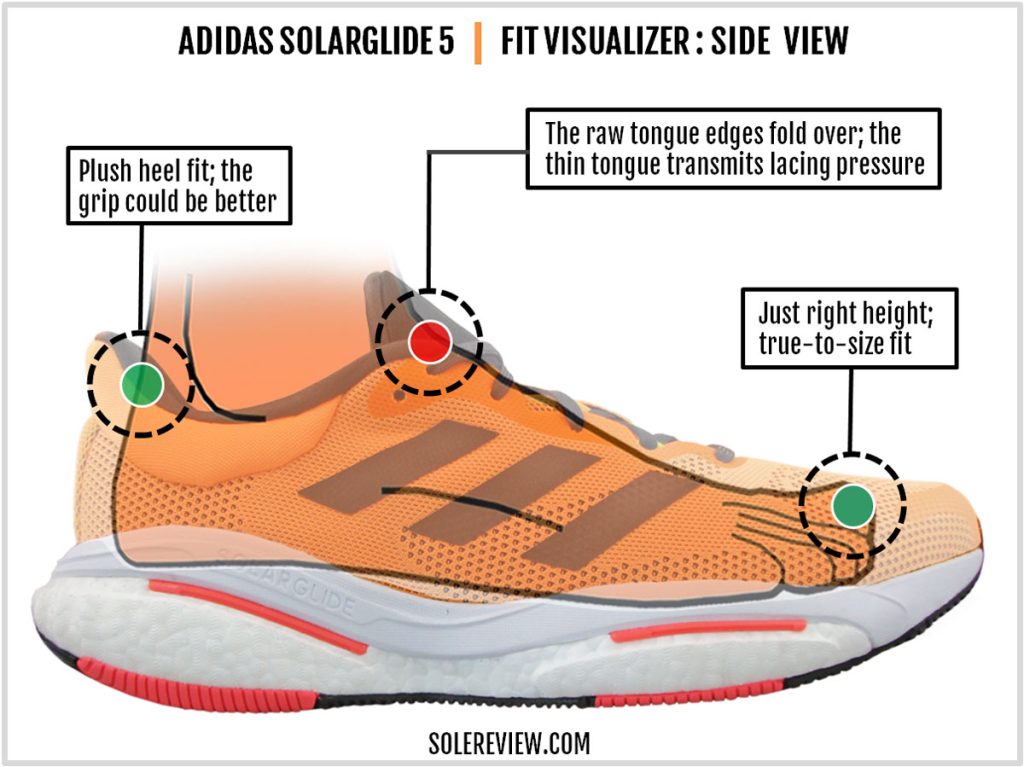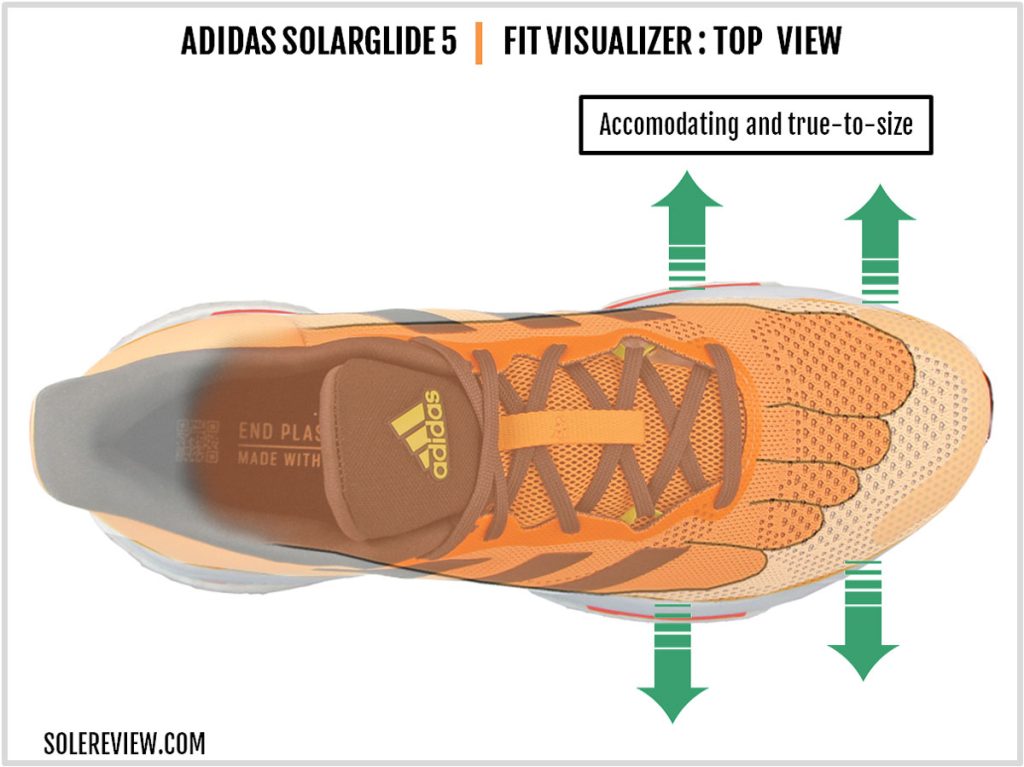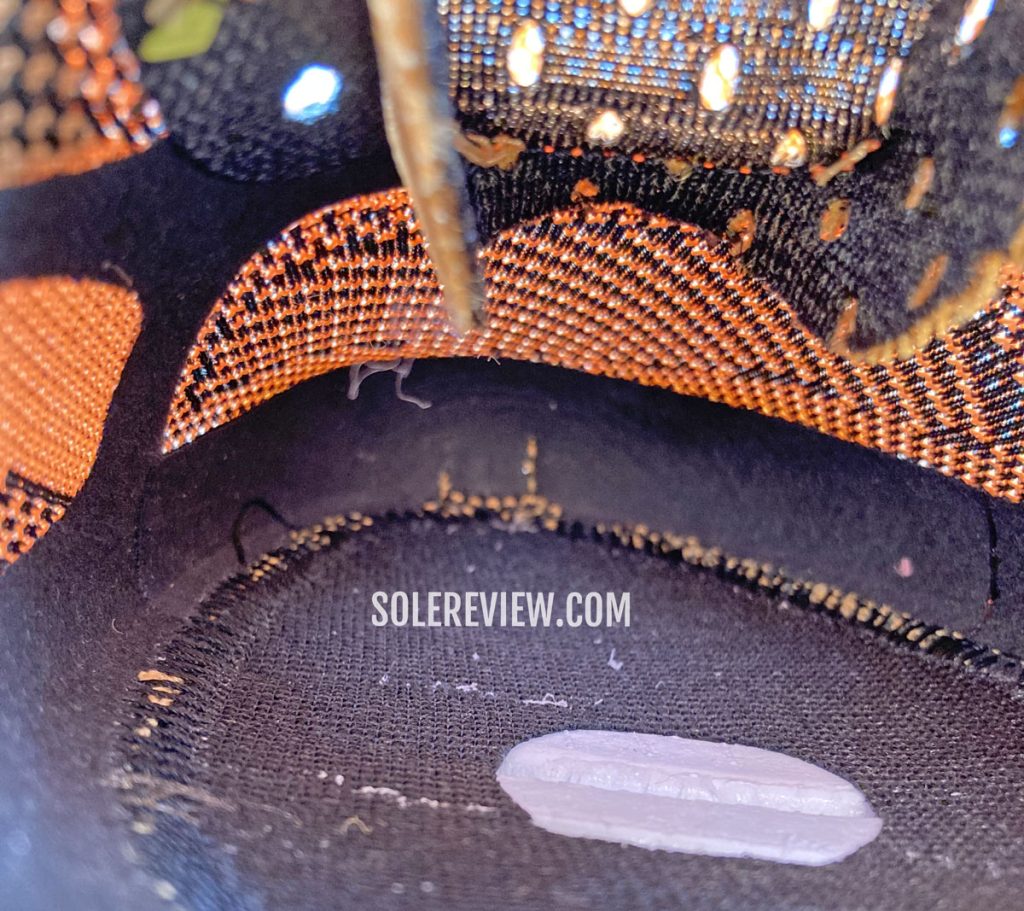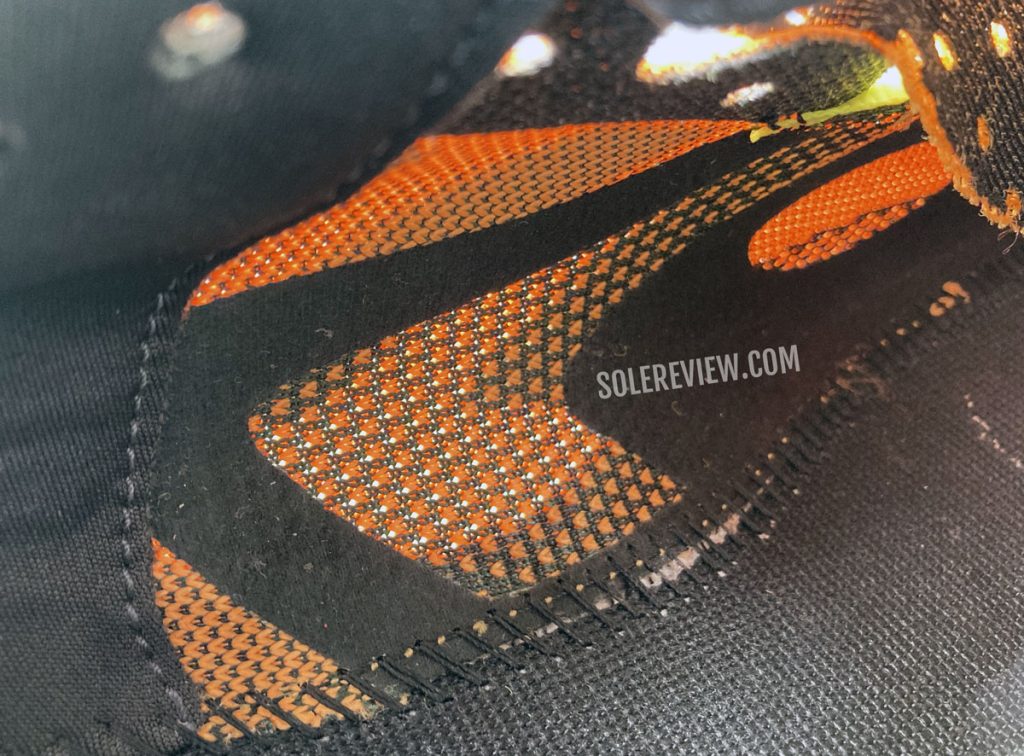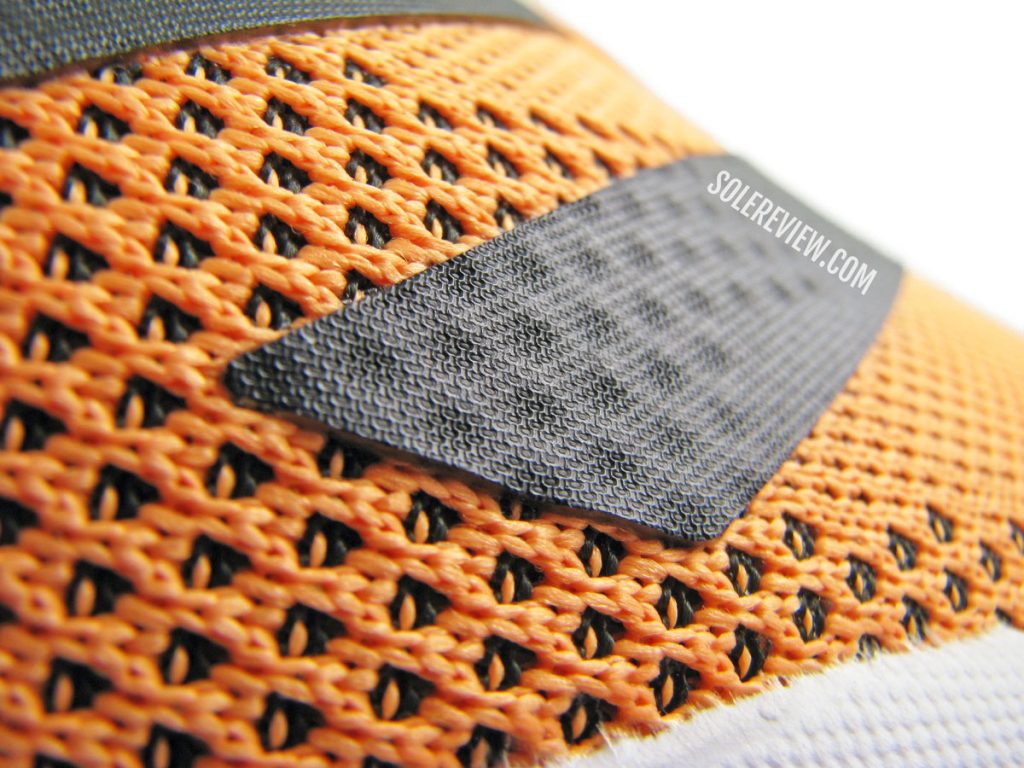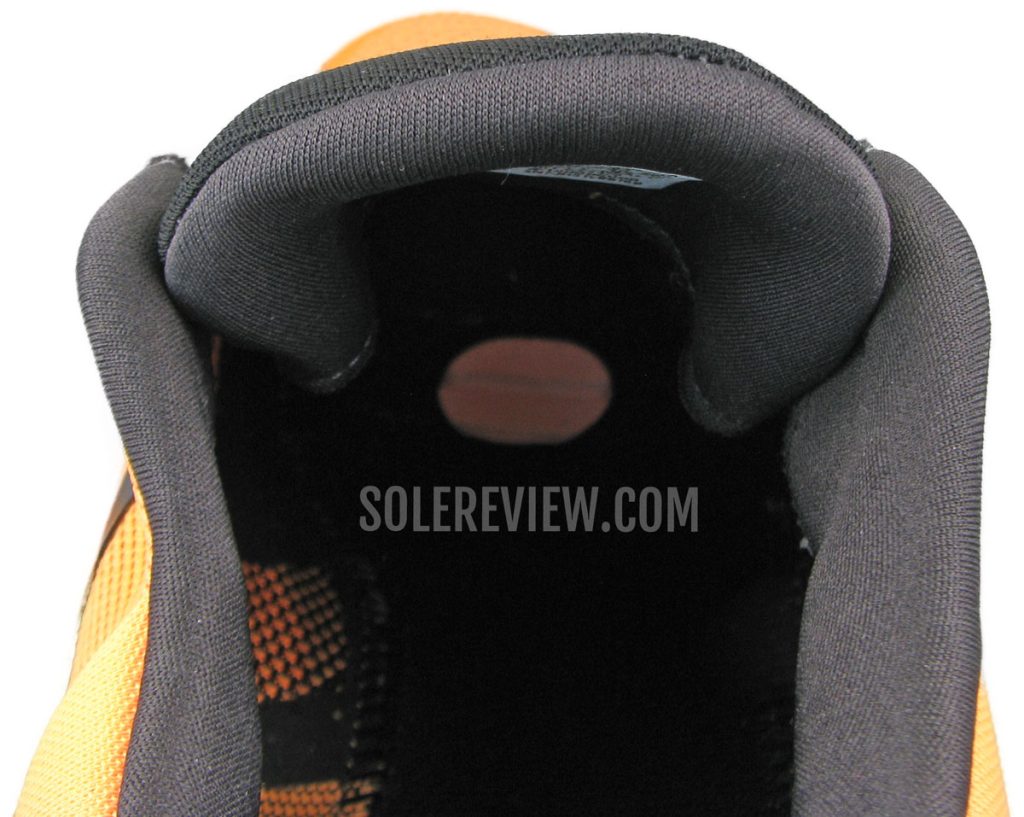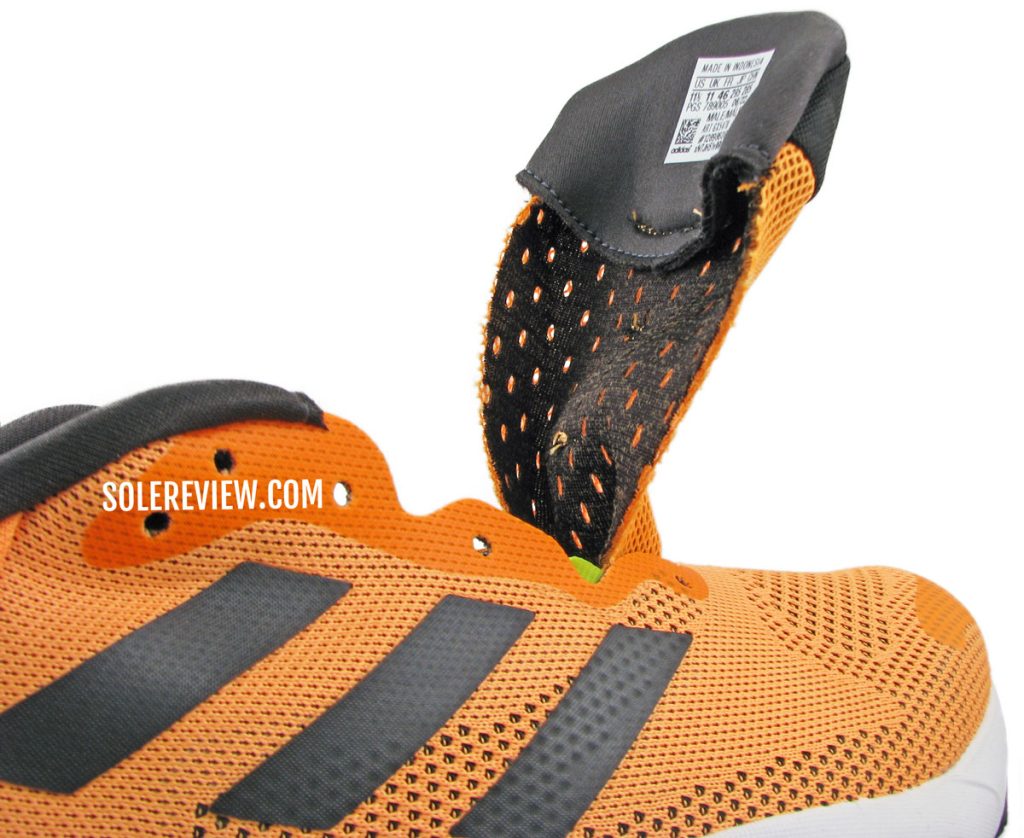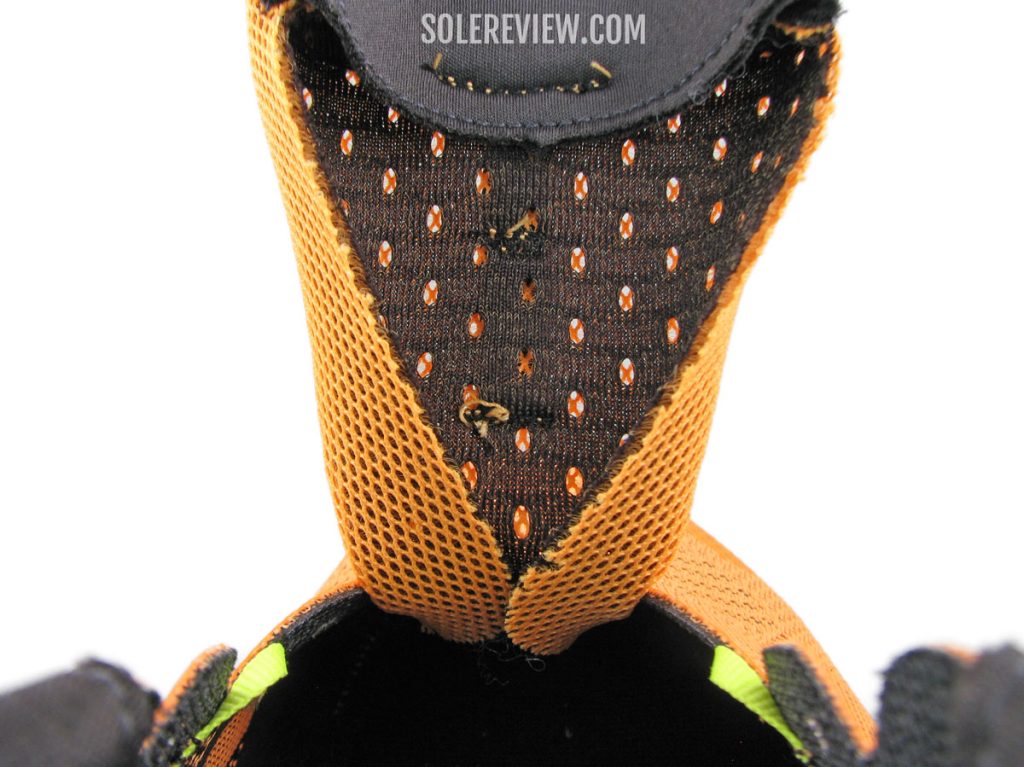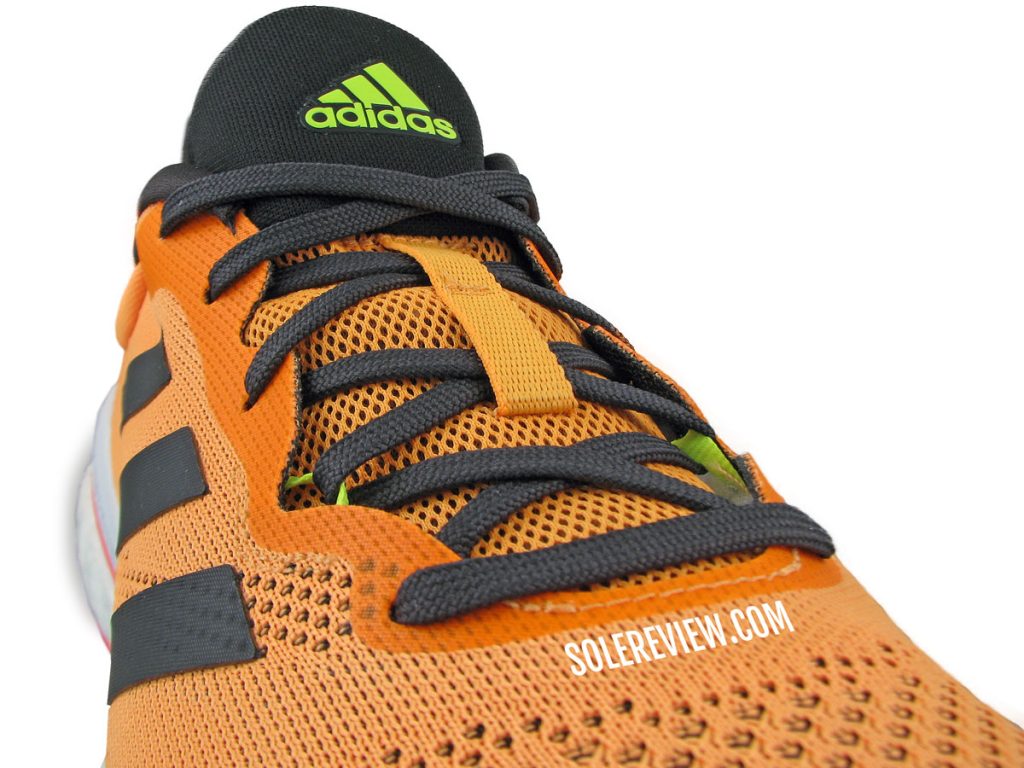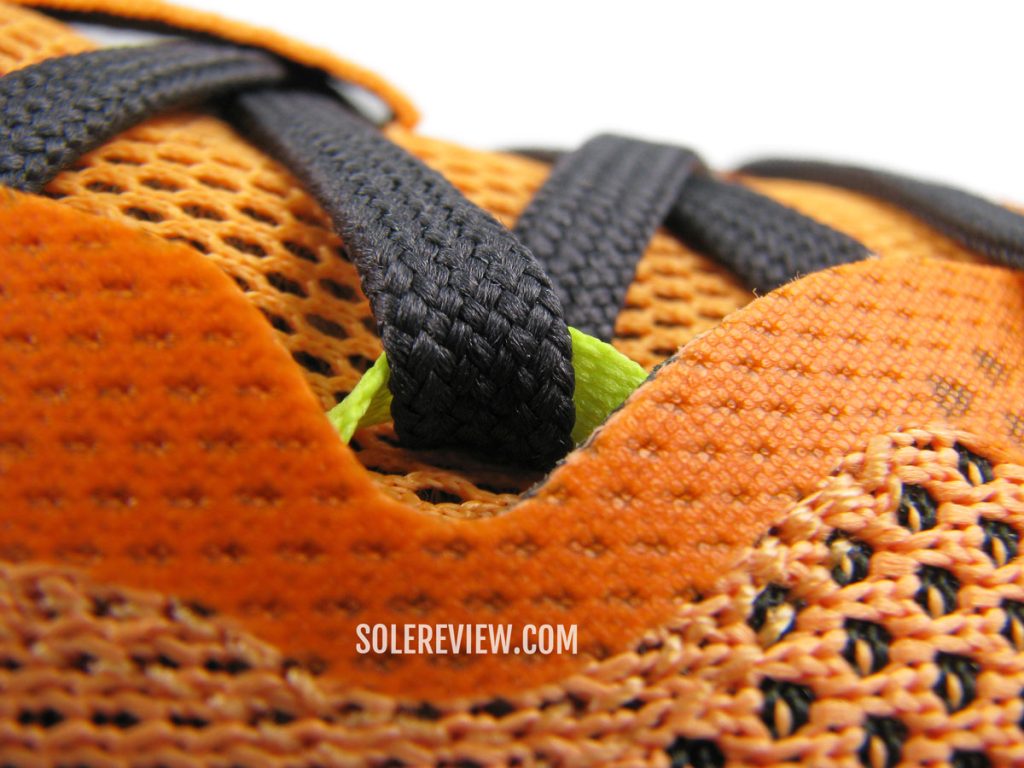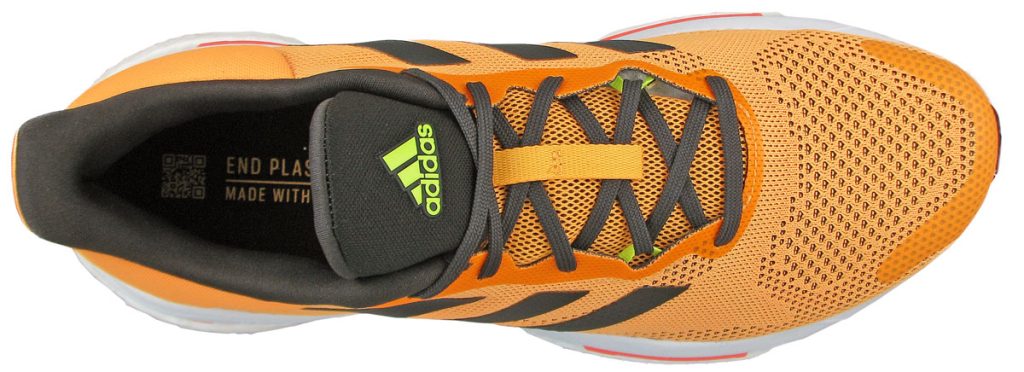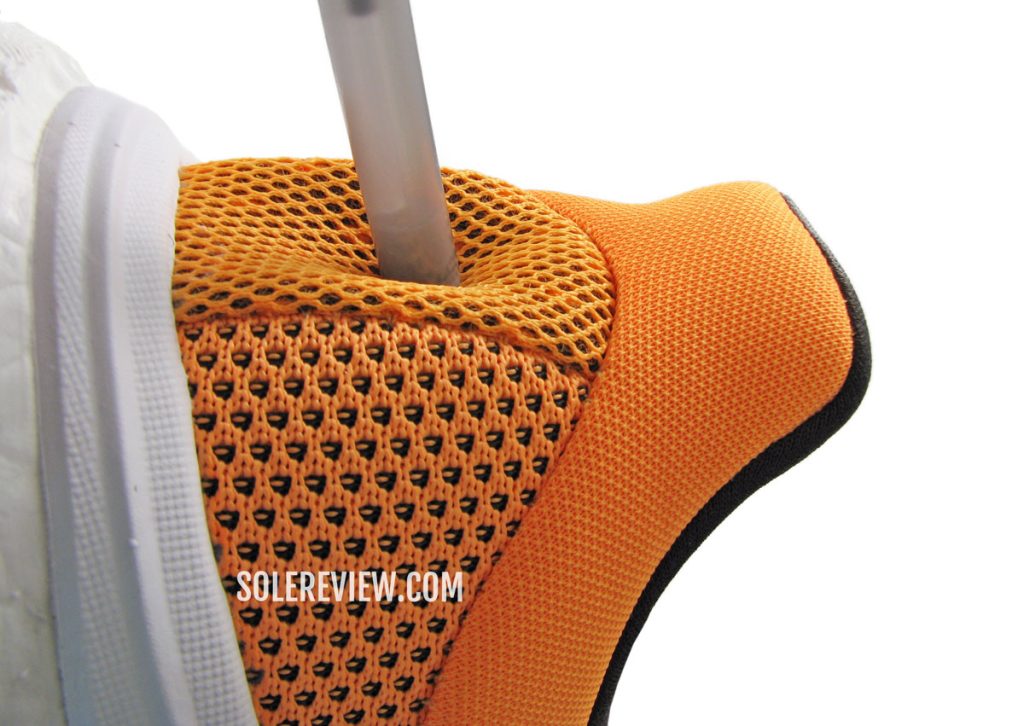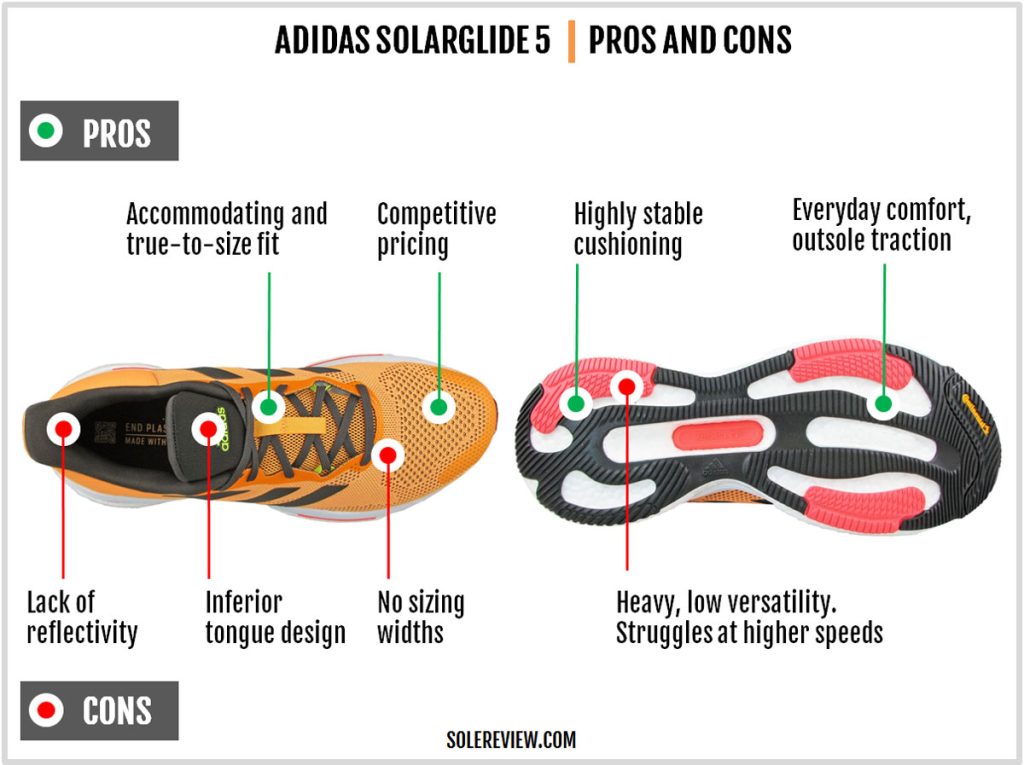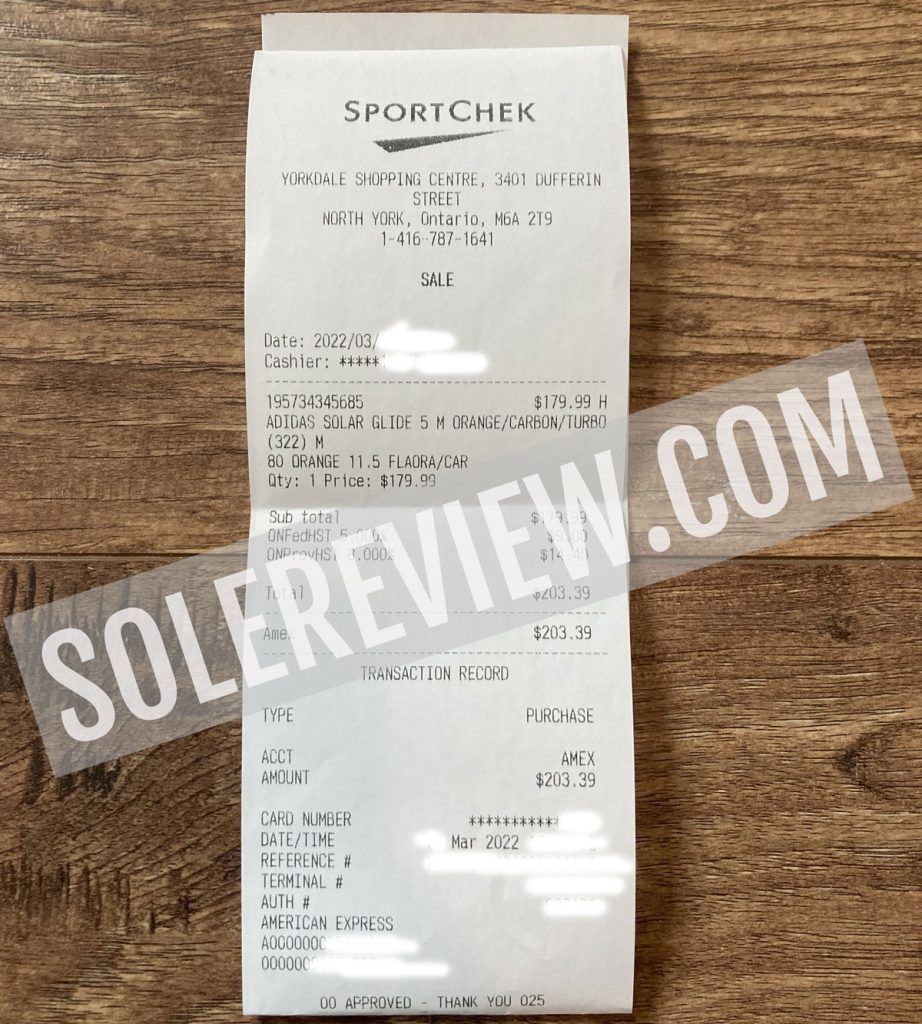
The adidas Solarglide 5 was purchased at full retail price for our review. The amount is in Canadian Dollars.
In this review:
INTRODUCTION
The adidas Solarglide 5 is a very strange running shoe, the kind that doesn’t fit into an existing stereotype.
Sure, there are visible traces of the Solarglide 4’s lineage. Like the V4, the new model has a full-length Boost core with an EVA midsole rim. There’s a Continental rubber outsole and plastic shank.
And like the Solarglide 4, the Solarglide 5 is supposed to be an everyday trainer with a modicum of versatility.
But Solereview doesn’t agree with that positioning. Our half pair of US 11 weighs over 14-ounces. To put that in perspective, that’s more than the ancient Brooks Beast 16 or the infamous adidas Springblade.
We haven’t crossed paths with a 14-ounce running shoe in more than five years. Okay, the Salomon Snowspike weighs more than 14-ounces, but it has a double-layered upper with metal hardware on its outsole.
In most cases, a high weight doesn’t imply that the running shoe is bad.
After all, the Solarglide 5 has exceptional midsole stability – easily the most stable shoe we’ve tested this year. The lack of weight constraints also allows adidas to cram in copious amounts of Boost foam, which in turn elevates the ride comfort.
However, a running shoe that weighs over 12-ounces (for the median size) ceases to be a ‘standard’ everyday trainer.
At that weight class, the Solarglide 5 doesn’t compare with the adidas Cumulus 24, Brooks Ghost, Saucony Ride 15, or the Nike Pegasus. Instead, heavier shoes like the Brooks Addiction GTS 15, Saucony Echelon 8, and Mizuno Wave Sky are appropriate like-to-like comparisons.
To sum up, the Solarglide 5 is a cushioned, albeit heavy running shoe with limited versatility.
It’s hard to see a use case for the SG5 other than being a shoe for slow, lumbering runs. We never imagined we would say this, but the Ultraboost 22 is more versatile than the Solarglide.
However, it’s hard to overlook the excellent value that the Solarglide 5 offers for its $130 price.
The tech-heavy design makes other shoes in this price-band look like rip-offs. It’s also worth pointing out that the V5 is $10 cheaper than the previous model; that doesn’t usually happen.
THE MIDSOLE DESIGN AND RIDE EXPERIENCE
The Solarglide 5’s midsole has a novel design without precedent.
We don’t say that lightly; the integration of the plastic ‘LEP’ shank is unlike any running shoe we’ve encountered. Conceptually, the ‘pivot posts’ of the Brooks Cascadia (V15 and earlier) bear a vague resemblance, but Brooks used foam wedges instead of a wing-shaped plastic shank.
The LEP (short for Linear Energy Push) component is an evolution of adidas’s Torsion shank, and despite numerous updates, the core design has stayed the same. Until now.
This shank would usually originate under the midfoot, and then ‘branch’ forward and rearwards between the midsole and outsole. This formula stayed more or less the same, be it the 2014 Energy Boost or Ultraboost 22.
All that changes on the Solarglide 5. Based on our ride experience, the LEP shank appears to rise and form a ‘wing’ under the heel and forefoot. At this point, this is just conjecture, but that seems to be an accurate description based on how the shoe behaves.
By the way, that makes this shoe an excellent candidate for a tear-down exercise.
The unique LEP part influences the ride character in two important ways. The first outcome is the obvious one – the midsole is exceptionally stable under the heel and forefoot. The cushioning is also very neutral with no sign of a bias.
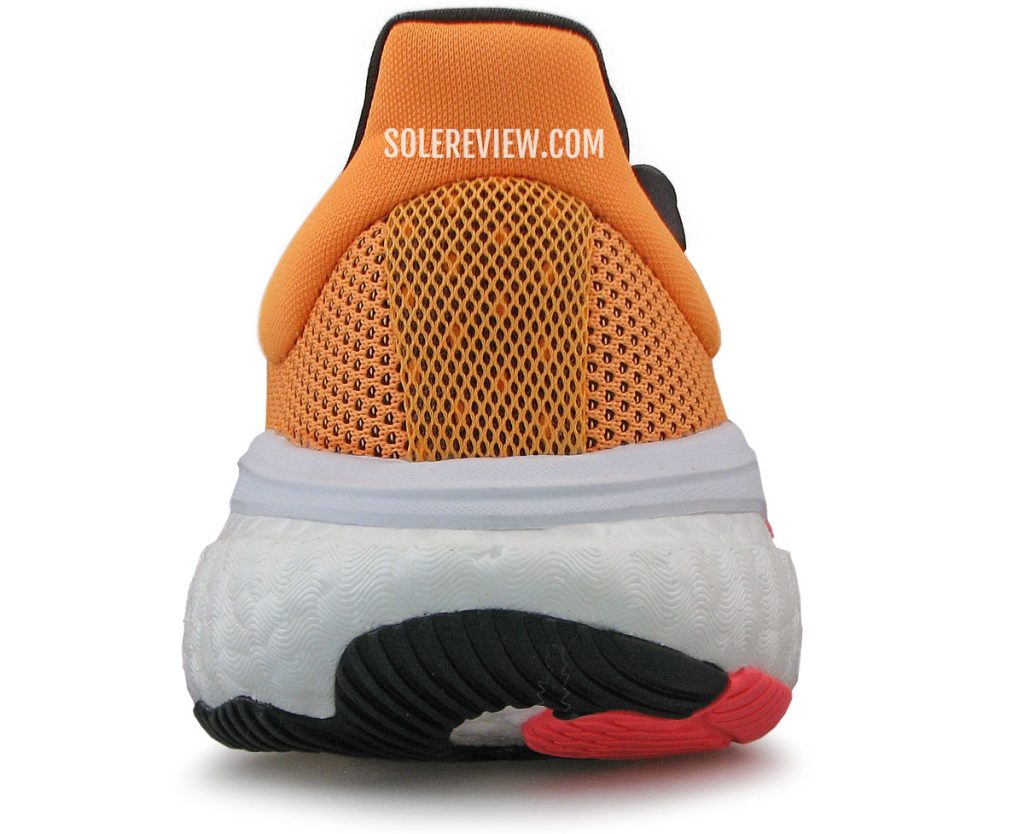
The wide midsole, EVA rim, LEP wing, and the insole work together to deliver an exceptionally stable ride.
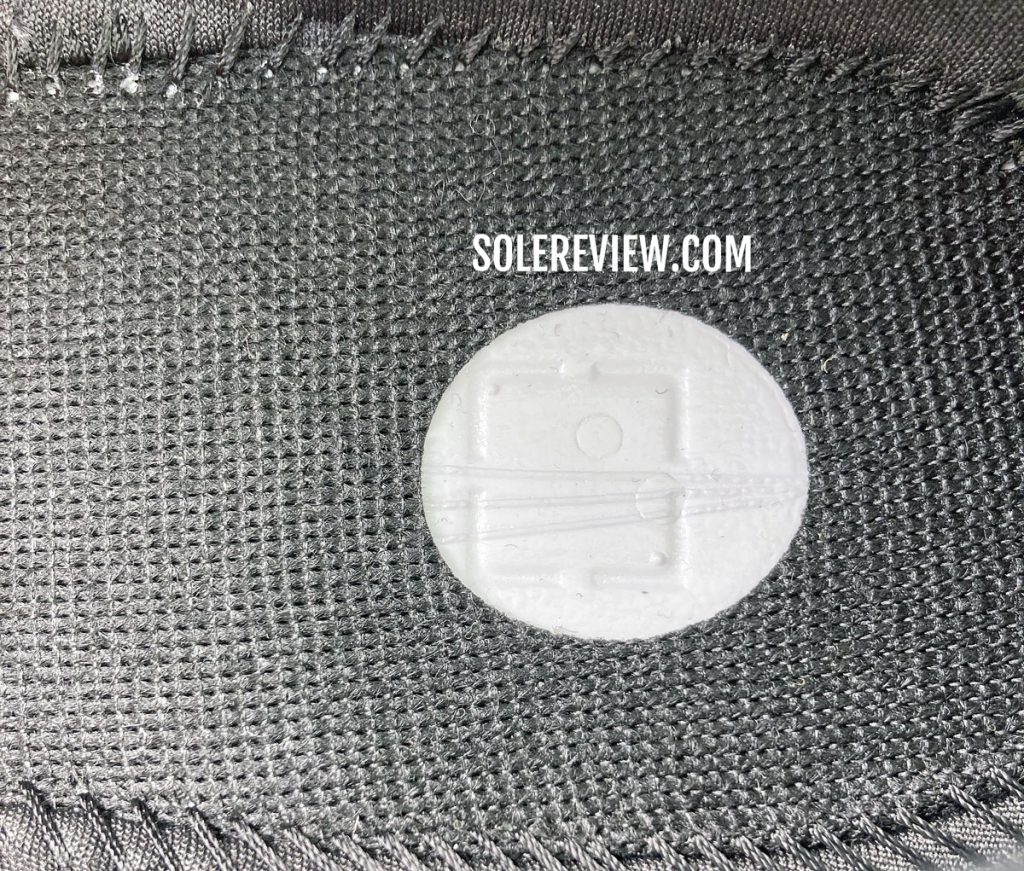
Only the insole separates the foot from the Boost core; there’s a thin fabric layer with windows under the heel and forefoot.
The EVA rim on the sides helps, but what makes the ride truly stable is the wing formation of the plastic shank. The raised EVA rims also ‘cup’ the heel, while the LEP + wide midsole + insole do the rest.
The insole design is interesting. Most removable footbeds have a molded flare only on the arch side, but this sockliner is raised on both sides.
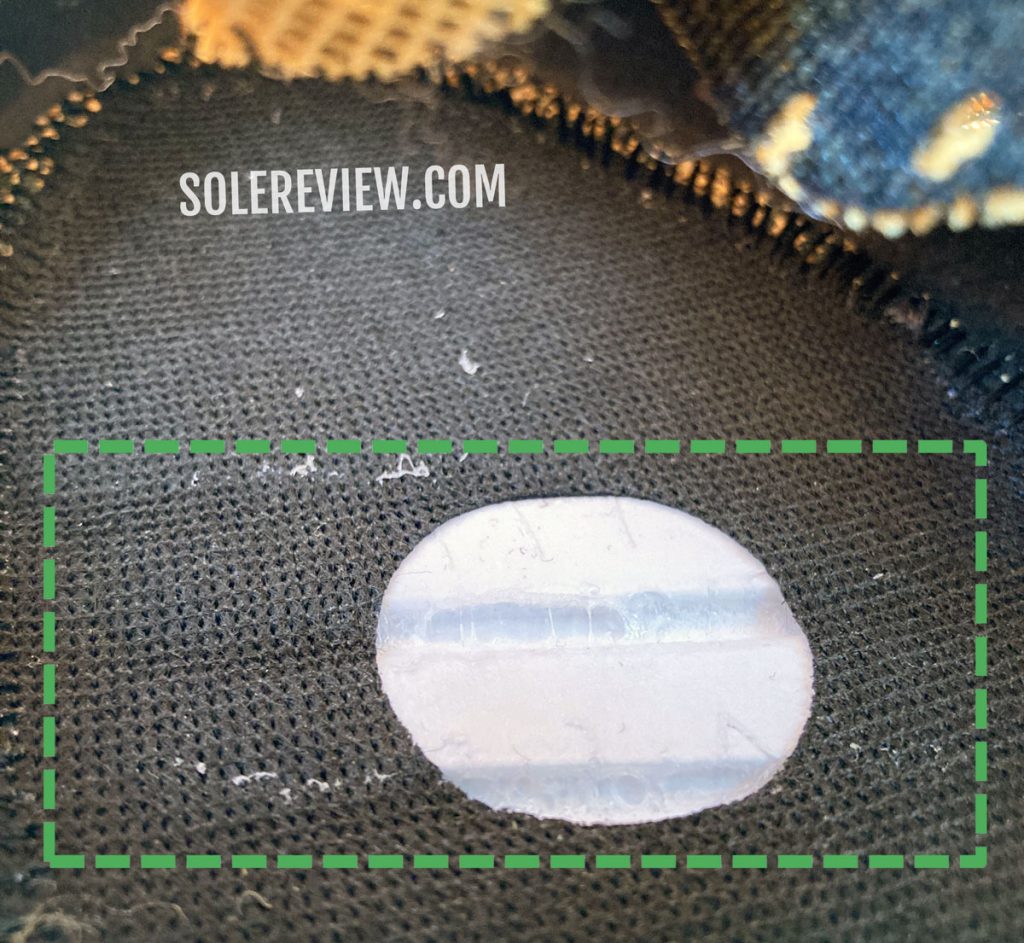
The forefoot has flex grooves molded in, but they fail to improve the flexibility of the rigid midsole.
Unlike the traditional Torsion design that gives the forefoot some degree of flexibility, this new form factor makes the midsole extremely stiff.
The forefoot cannot be bent at all, despite the internal flex grooves. As you can see in the picture above, there are grooves molded (outlined in green) on the top. That makes no difference at all.
The midsole core is Boost foam – an expanded Polyurethane foam that has excellent resistance to freezing temperature as well as cushioning fatigue.
Unlike the Ultraboost that crams most of the foam under its heel, Boost is distributed more evenly here. The forefoot has a respectable stack height of 26 mm, which is 10 mm lower than the 36 mm heel.
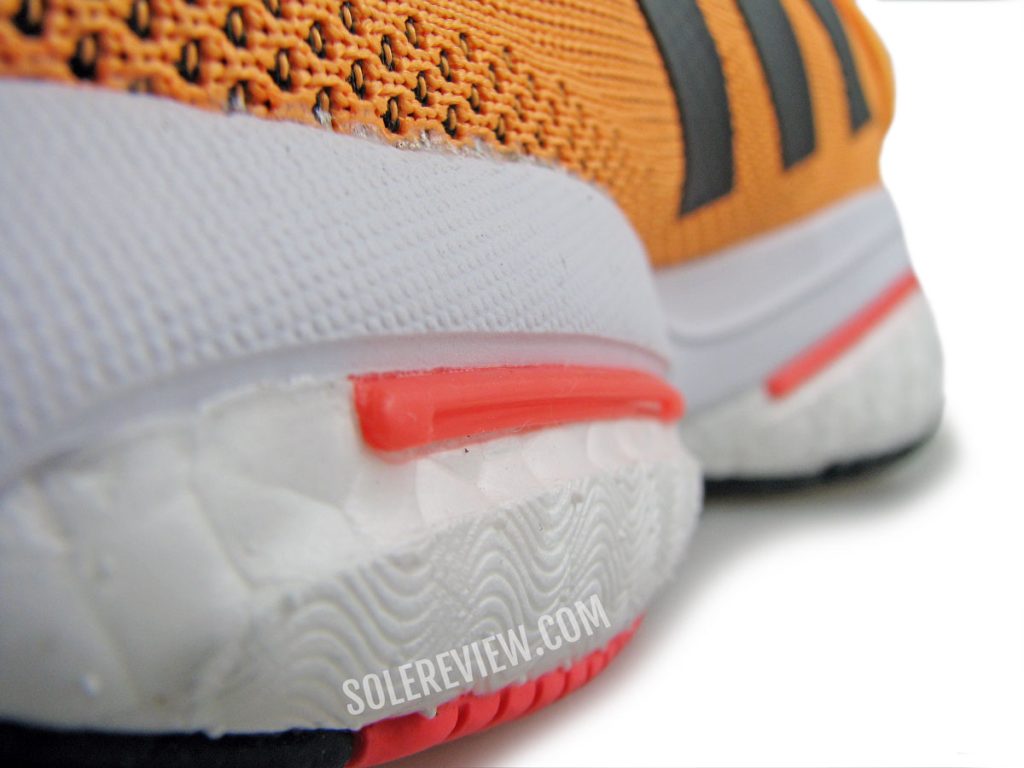
The plastic shank also acts as the forefoot stability device. Note the wide flare of the Boost midsole.
The new Solarglide also doesn’t cover the forefoot with the EVA sidewall, as was the case on the Solarglide 4. This time, not only is the Boost exposed under the forefoot, but it also flares wide – as it does under the heel.
The term ‘energy return’ is thrown around casually in the running shoe industry. Of course, PEBA foam based-shoes like the Nike Vaporfly or Saucony Endorphin truly deserve that praise.
A long time ago, the adidas Boost foam could be described as responsive. The cushioning benchmarks in 2015 looked a lot different than how they do today.
But today, runners have access to truly responsive shoes with PEBAX midsoles and Carbon plates, so adidas Boost has long ceased to be the only show in town. There’s a modicum of muted bounciness, but that’s all there is to it.
On the road, the Solarglide 5 feels like a heavy shoe; that’s because it is. Or more like a bottom-heavy shoe, since most of the material bulk is situated in the sole unit. It’s hard to infuse speed into your runs; the sheer bulk gets in the way.
At the start of this review, we said that the Ultraboost 22 was a more versatile running shoe than the Solarglide. We weren’t joking; not only is the Ultraboost 22’s forefoot 5 mm thinner, but the LEP/Torsion shank design also makes a difference.
The LEP extensions on the Ultraboost are closer to the ground, and create a snappy forefoot transition as its flexes and returns to its original position. However, the Solarglide 5’s novel LEP part doesn’t have the same effect.
That’s why the Ultraboost 22 feels ‘faster’ on a relative scale of slow to fast. The weight also plays a role in the use case versatility; the Solarglide 5 is a whopping 1.5-ounces (42 grams) heavier than the Ultraboost 22 for each half pair.
At best, the Solarglide 5 works wonderfully as a cruiser for relaxed pace (6 min/km, 10 min/mile speed range) or even as a walking shoe.
And if you intend to use it as a lifestyle sneaker, may we recommend the adidas Ultraboost 22 instead?
Among the positives, there’s ample cushioning under the foot. The Boost core isn’t overly soft, but it’s never found wanting in ride comfort. Regardless of whether you first make contact with the forefoot or rearfoot, Boost is never in short supply.
Given its exceptionally stable ride, the Solarglide is a good shoe to use inside the gym. It’s supportive enough for most weight-training sessions, and will do the job when used for short-duration treadmill runs.
The outsole design also differs from the previous versions of the Solarglide outsole.
Here, the cut-outs on the single-piece outsole expose larger sections of Boost foam. This geometry results in better outsole (not the midsole) flexibility, which means it does a better job of blending with the midsole foam than the Solarglide 4 or even the Ultraboost 22.
The traction on the roads is excellent. Though the outsole doesn’t cover as much ground as the previous layout, the ridge-like lug pattern grips confidently on the roads.
RECOMMENDED ROTATION
If you decide to get a pair of the Solarglide for easy everyday runs, it’s recommended that it be used in rotation with other shoes – from adidas or elsewhere. By itself, the Solarglide 5 lacks the versatility to be a do-everything running shoe.
For shorter duration speed runs and races, adidas has plenty to offer. There’s the adios 6 for the traditional racing shoe feel, whereas the Takumi Sen 8 has a softer ride with a higher level of comfort because of its Lightstrike Pro foam.
The affordable Asics Hyper Speed offers a speed-friendly ride through its traditional form factor; an EVA foam midsole provides just the right amount of comfort for 5 – 10K runs.
The adidas equivalent of a Nike Vaporfly or Saucony Endorphin Pro is the adizero Prime X. The midsole is made of 100% Lightstrike Pro foam, the same compound that makes up the adios Pro 2’s midsole.
However, the Saucony Endorphin Speed 2 offers the best value within the cushioned racer category. It’s priced well below $200, and you still get the responsive cushioning character that’s expected of a plate-equipped racer.
IS THE ADIDAS SOLARGLIDE 5 DURABLE?
The Solarglide 5’s midsole may be radically different due to the unique midfoot shank, but all its ingredients are reliable parts with proven durability. The Boost foam midsole resists compression well, and the Continental rubber outsole doesn’t shred quickly.
The engineered mesh upper looks robust, so there should be no durability-related issues.
We’re slightly apprehensive about the lime-green loops that connect to the laces.
The fabric loops (seen in the picture here) are tacked to the upper with only two rows of stitching, so we don’t know how they’ll perform from a long-term perspective.
THE UPPER DESIGN AND FIT
Until a few years ago, most adidas running shoes had a noticeably narrow fit with no recourse for extra space – since adidas usually does not sell optional widths.
That has changed recently, and even speed shoes like the adios 6 and Boston 10 have relatively accommodating interiors.
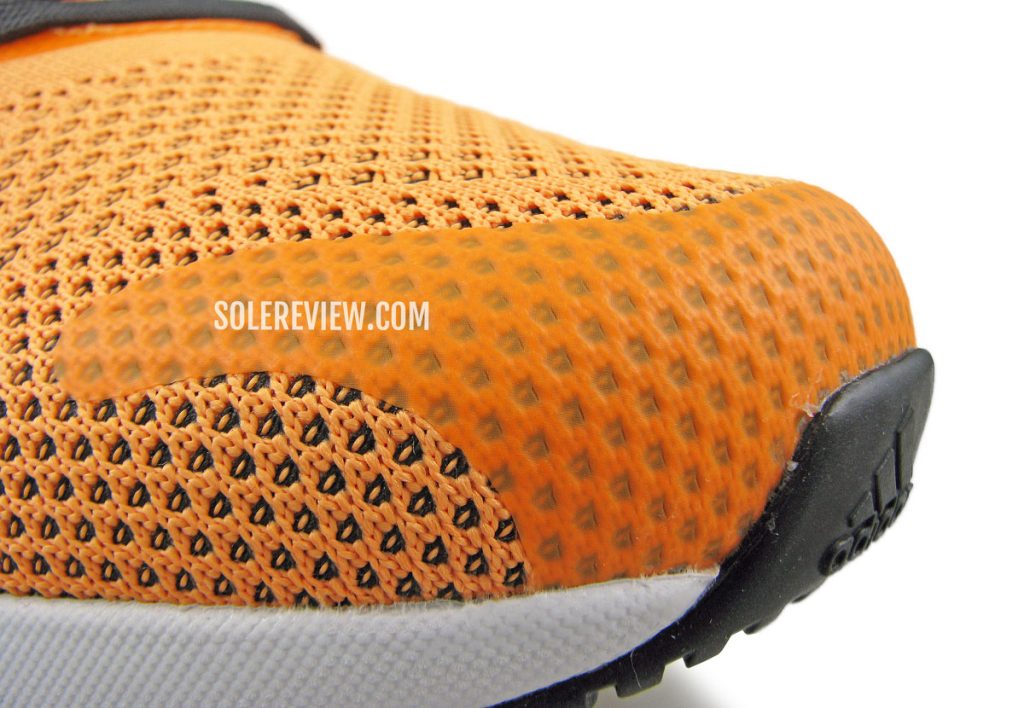
The broad toe-box is reinforced with a fused bumper on the outside, and a synthetic underlay on the inside.
It’s 2022, but adidas is yet to offer a 2E (wide) or 4E (extra-wide) on the Solarglide 5 – but it makes amends with a spacious toe-box. The upper also fits true-to-size, which is another improvement over historical adidas running shoes.
Though the engineered mesh exterior lacks stretch of any kind, the toe-box has sufficient interior space as well as ceiling height.
The interiors are supported by a network of soft suede overlays that prevents a droopy appearance.
The adidas 3-stripes logo is fused on both sides; we were half hoping that these were reflective, but they are not. The Solarglide 5 has zero low-light visibility trims.
We have to say this: the tongue design is downright terrible. It’s not sleeved, but that’s usually not a crime. When designed right, most tongues without a gusset function perfectly well.
But here, adidas commits not one, but two unforgivable sins. The first is keeping the edges of the narrow flap raw. The second mistake makes it worse – except for the quilted flap, the rest of the tongue has (mostly) no padding.
The lack of foam quilting means that the raw edges end up thin and unsupported.
Again, raw tongue edges do not pose a problem when executed correctly. A case in point is the Asics GT-2000 10 – a shoe with no sleeve and raw tongue edges. However, Asics made sure to generously pad the tongue with foam to fill the raw edges.
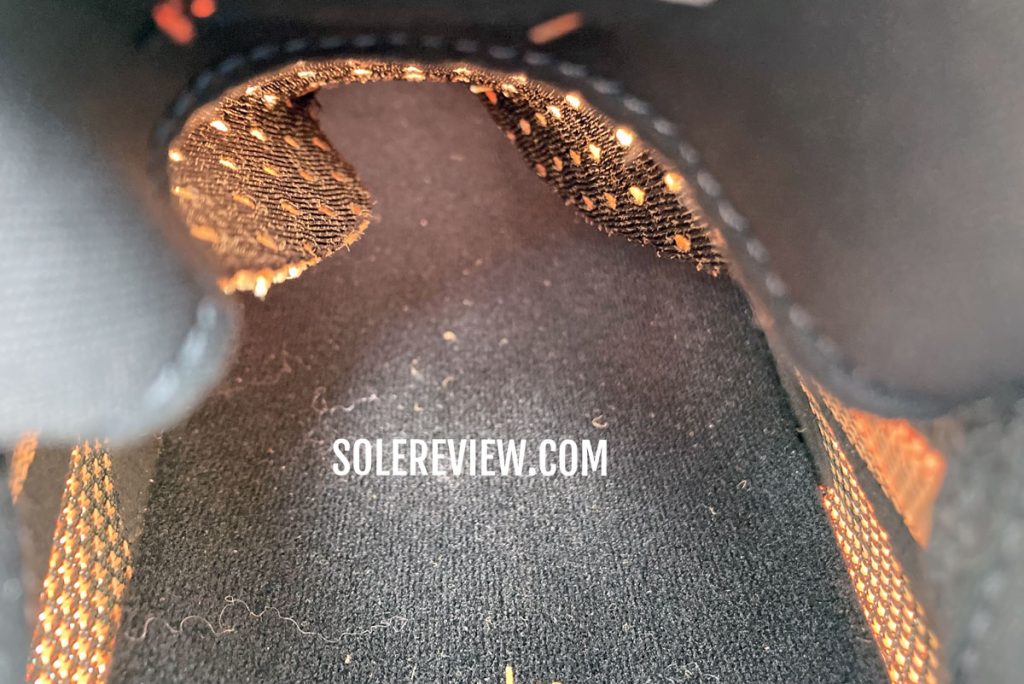
This is what happens to the tongue before wearing. The edges fold over, and have to be manually straightened by reaching under them.
Without a supportive foam layer, the edges of the Solarglide 5’s tongue are very eager to fold under. During each wearing, the tongue edges need to be flattened by running your fingers under the tongue. Very annoying, we know.
Surprisingly, the tongue did not slide sideways as much as we’d expected. When laced tight, the tongue tends to stay locked in place with only a minor deviation from its original position.
The lack of padding also means that the tongue does a poor job of absorbing the pressure from the laces. Which is a shame, because the midfoot fit is excellent.
A set of lacing loops is nestled within the panel to help achieve a better fit.
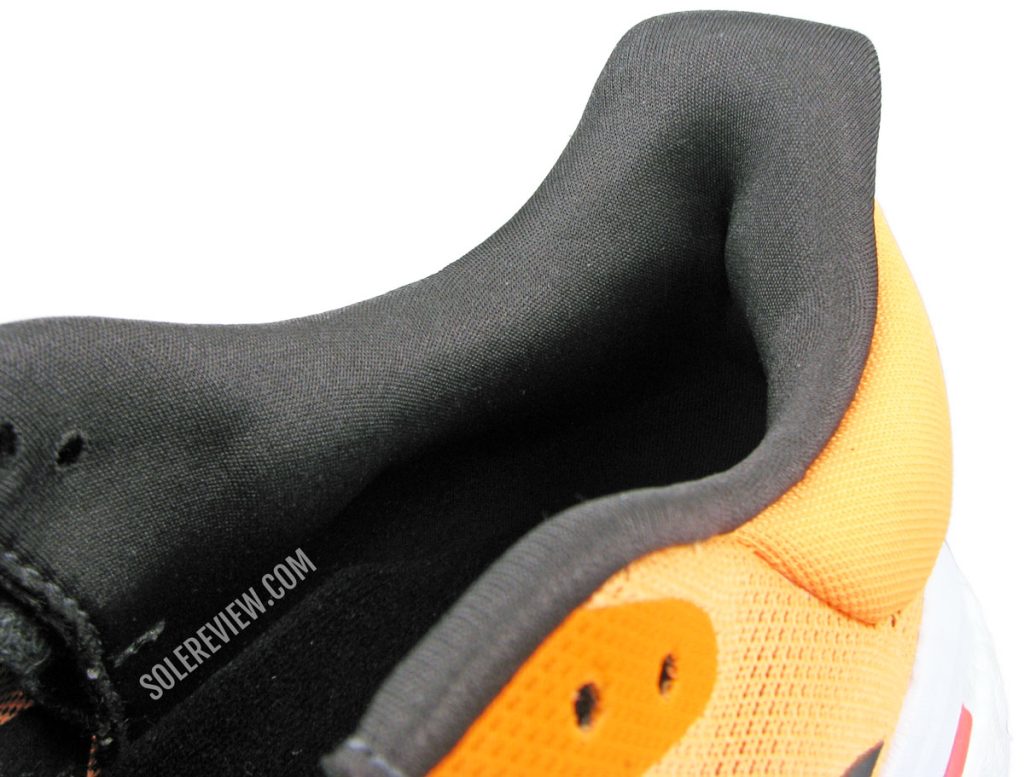
The heel is generously padded with foam and uses a soft lining. While the upper tries its best, the heavy midsole pulls down on the heel.
The heel counter design is interesting. When viewed from the top, it looks just like a regular heel counter. The Achilles dip is padded, and the soft lining is filled with foam. That makes the heel fit plush and comfortable.
There’s a novel design feature that greatly minimizes the chances of irritating the Achilles tendon.
Even though the heel is supported by a stiff counter, it’s designed in a way that keeps the center soft. We haven’t seen this design on any other running shoe brand. It’s similar to how the heel of the original Ultraboost was designed, except that here it’s an internal counter.
We know it’s hard to explain it in words, so this picture should make it clear. We pressed the back of a pen against the heel counter, and as you can see, the center is soft and is 100% mesh. Only the sides are supported with a hard counter.
The heel grip is good, but not great. From what we can tell, it’s not because of how the heel is designed, but rather how heavy the Solarglide 5 is.
Our half pair of US 11 weighs more than 14-ounces. Considering the Solarglide’s bottom-heavy construction, the weight tends to pull the shoe down. Because, uh, gravity. The heel doesn’t slip, but there’s this underlying sense of less-than-perfect grip.
PROS AND CONS
By now, readers must have deduced that the Solarglide 5 is not a versatile running shoe.
At nearly 13-ounces, this is a lumbering hulk of mesh, foam, plastic, and rubber. Add to that a thick midsole stack and redesigned LEP shank, and we get a shoe that’s best used for easy runs at slow speeds.
In return for the high shoe weight, you get an exceedingly stable ride quality. The copious amounts of Boost foam equate to a high level of ride comfort. The Continental rubber outsole grips well, and appears to be durable.
The inferior tongue design is disappointing on what is an otherwise well-fitting and true-to-size upper. The raw edges tend to curl over, and the lack of padding transmits the top-down lacing pressure.
Adding some reflectivity would have been useful as well.
SHOES SIMILAR TO THE ADIDAS SOLARGLIDE 5
Considering how heavy the Solarglide is, comparing it with the likes of the Asics Cumulus and Nike Pegasus will be an unproductive exercise.
Instead, let’s explore other running shoes that are in the Solarglide’s weight class.
For obvious reasons, the adidas Ultraboost 22 shares many traits with the Solarglide because both shoes are based on a similar material library.
Even though the UB 22 is perceived as a lifestyle sneaker, its thinner forefoot, lower weight, and closer-to-the-ground LEP shank make it a better running shoe.
Comparable Brooks shoes would be the Dyad 11 (11.5-ounce) and Addiction GTS 15 (12.2-ounce). Both running shoes have an ultra-supportive and cushioned ride – a combination that’s a good fit for easy runs.
The New Balance 840V5 and Saucony Echelon 8 are priced the same as the adidas shoe, and have a similar weight profile. Lastly, the Mizuno Wave Sky 5 is $30 more expensive, but in lieu, it offers a softly cushioned ride and a plush upper.
Do you own this shoe? Improve this review by sharing your insights – submit a review here.

